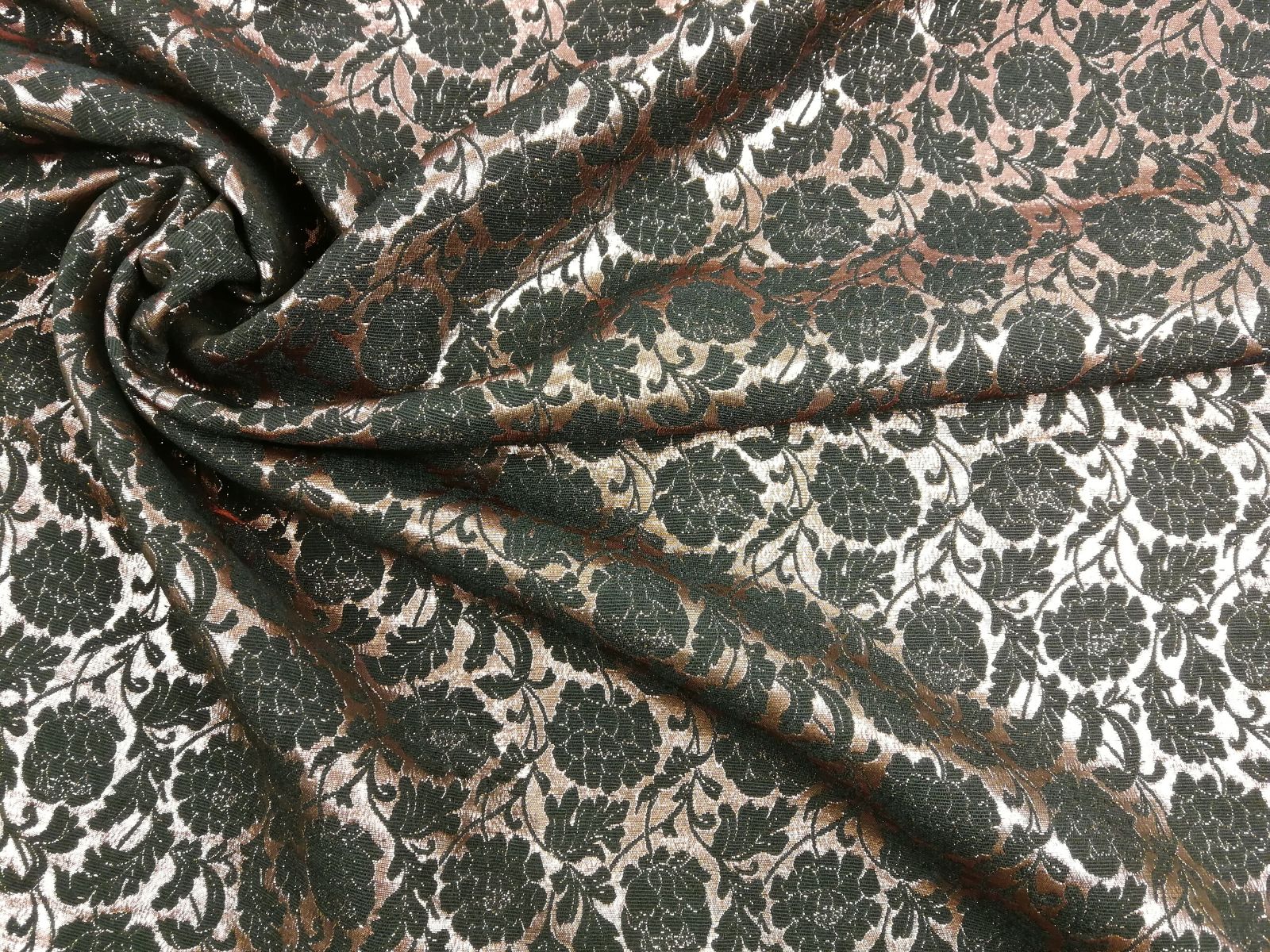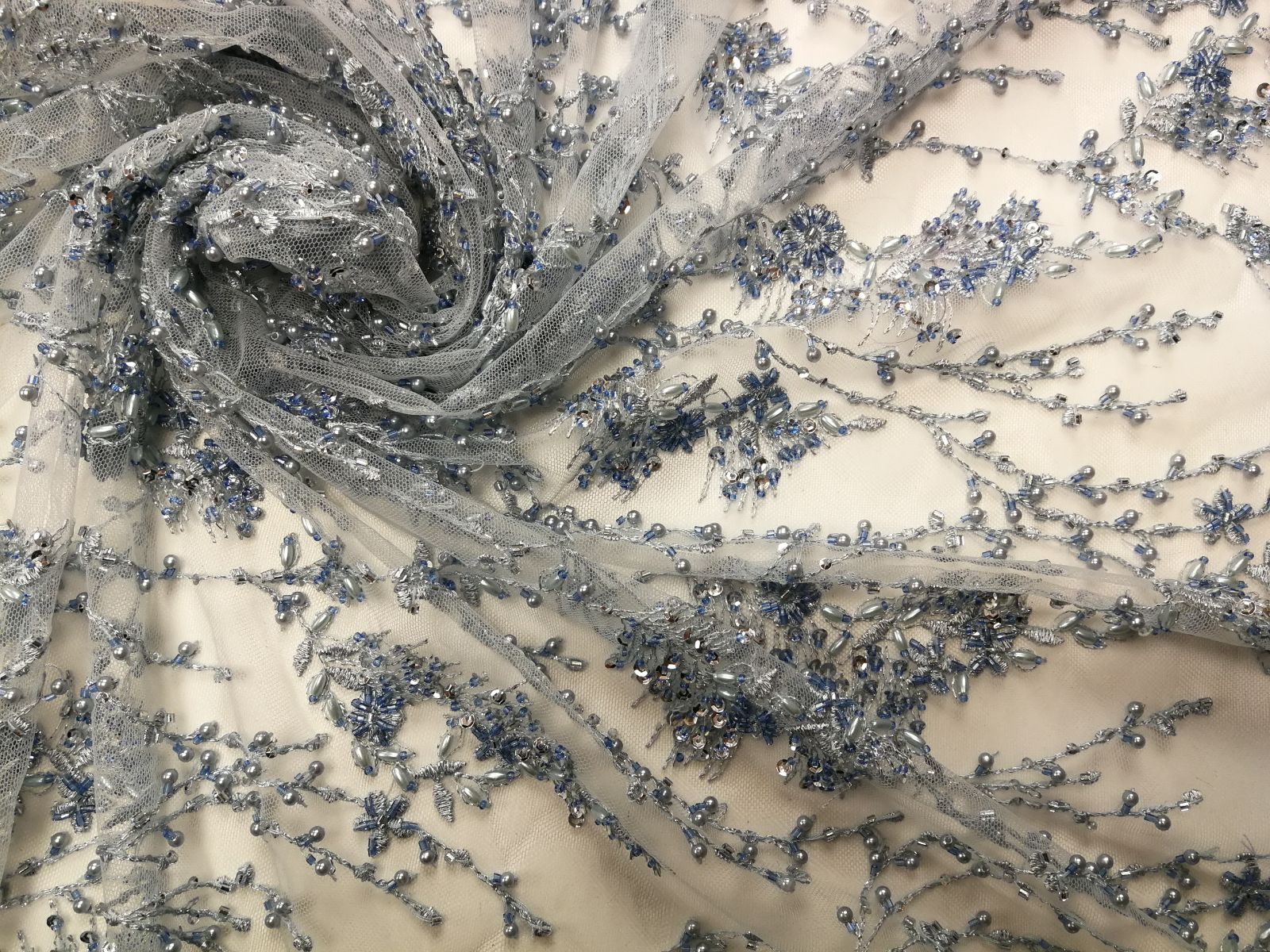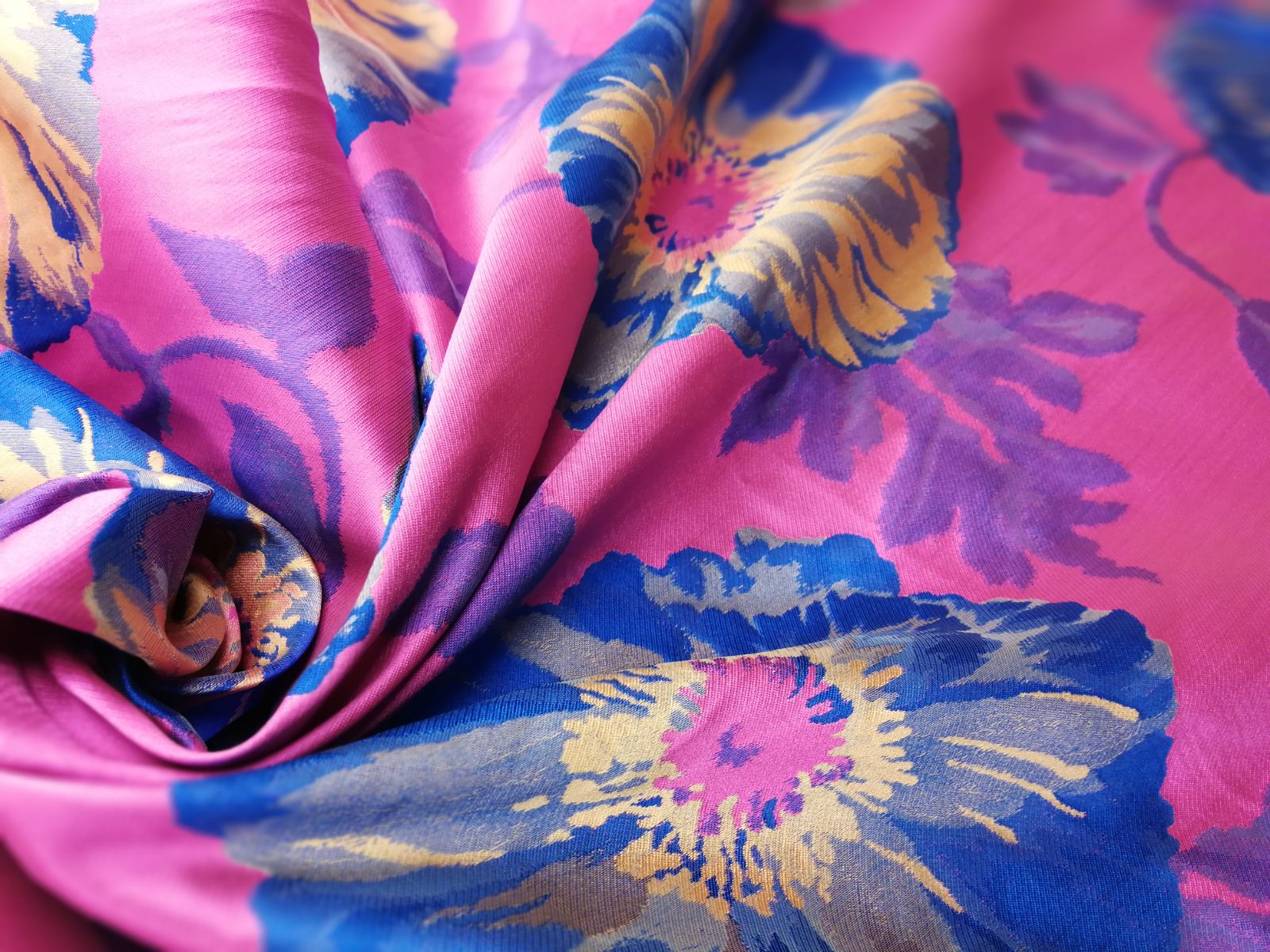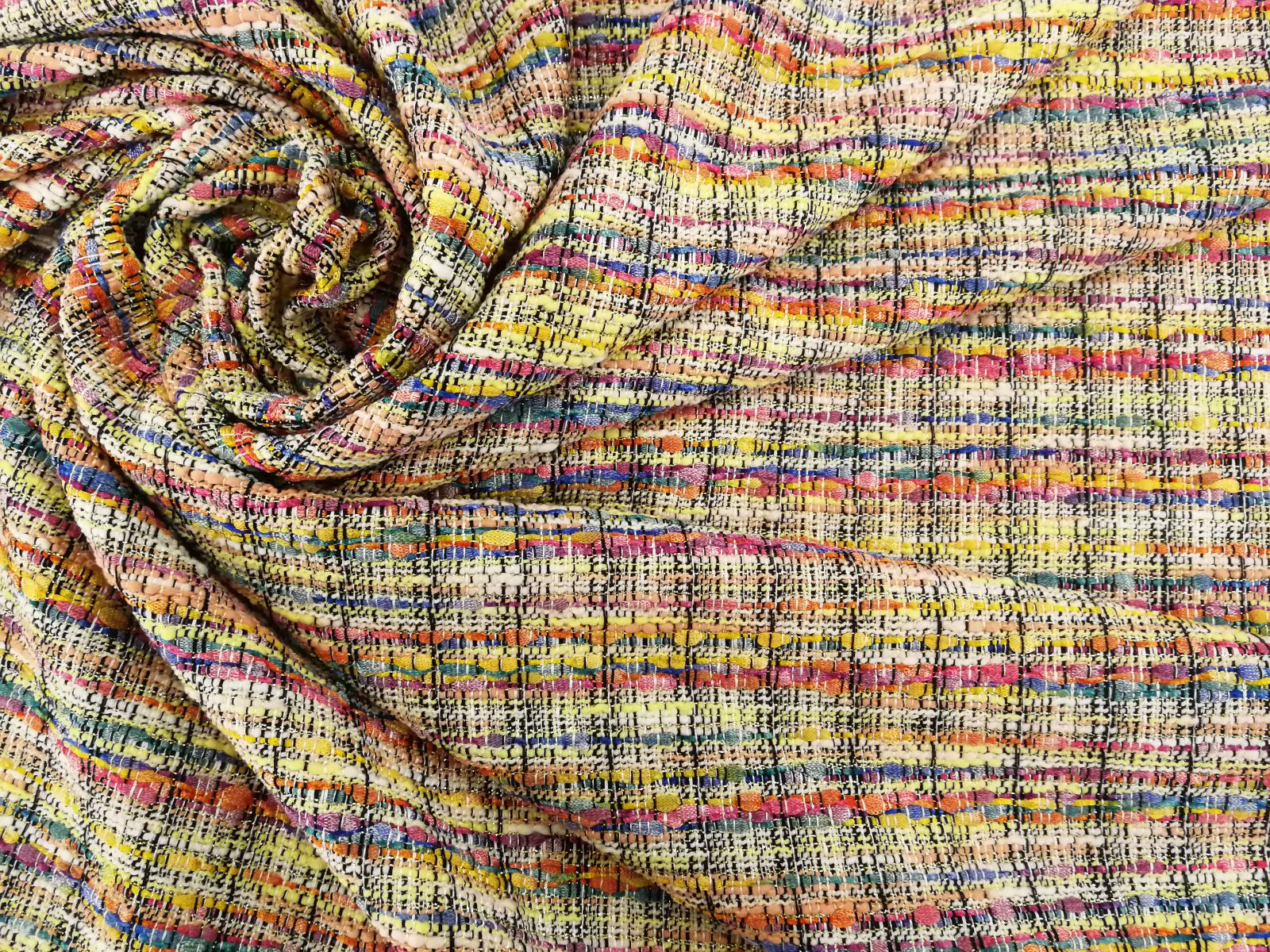Gratacós en la pasarela barcelonesa
The essentials of PhotoEspaña 2018
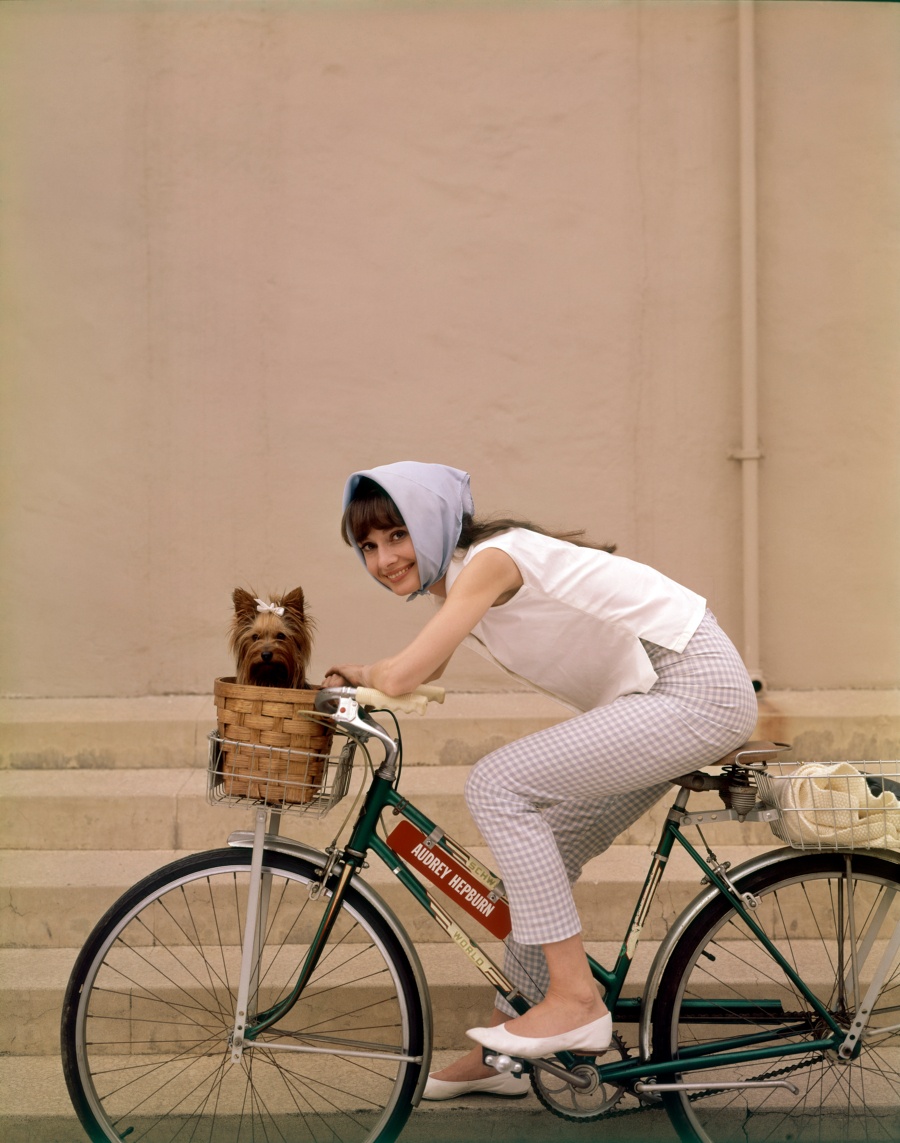
When you ask us where we draw the inspirations to design each year the collections of fabrics of the season, the answer always remains in an eternal mystery. Does it come from something concrete or is it a visual accumulation of personal experiences? We do not know for sure what are the exact connections that drive creativity, but we can conclude that we are constantly nourished by the multidisciplinary arts, and especially those more sensory, to find those engines that require the association of ideas that then give way to the elaboration of the different shapes and textures of the tissues because in the end, everything is interrelated.
This month, we highlight some of the most inspiring exhibitions of PhotoEspaña , the consolidated international photography festival in Madrid that represents the ideal meeting point for lovers of portrait art. This edition, the contest celebrates two decades, since its creation in 1998, and brings together 530 photographers in 90 different exhibitions under a more transgressive vision that combines different languages. Of all the extensive program of events and activities taking place during the summer (until the end of September) , we highlight the following selection that we consider essential for some reason or another.

Cecil Beaton. Myths of the 20th century
Cecil Beaton’s camera has immortalized different characters that have marked the history of the twentieth century: avant-garde creators, cultural icons of Hollywood, European aristocracy… From Audrey Hepburn to Marlon Brandon to Salvador Dalí or Queen Isabel II of England, emblematic personalities who have surrendered to Beaton’s flashes and are all part of the Canal Foundation exhibition.
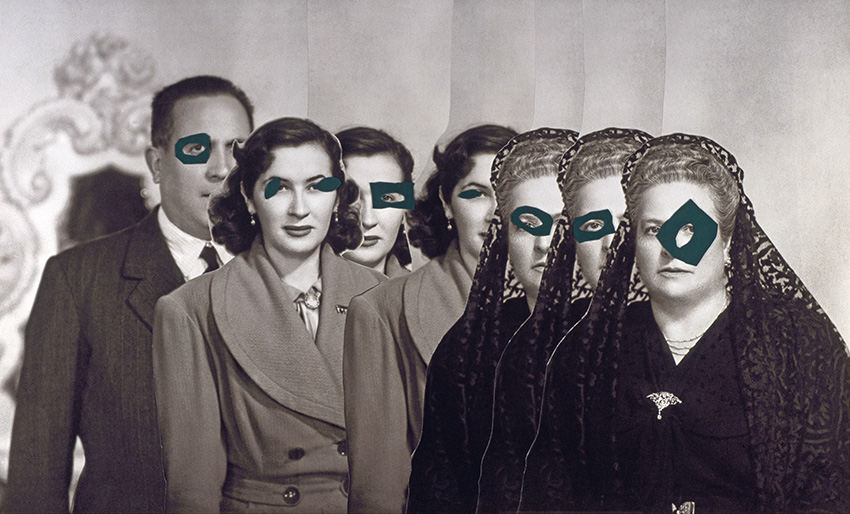
Carmen Calvo. Stillness and vertigo
The Valencian artist rescues old photographs of family albums found in street markets , during the 40s and 50s, to decontextualize them and give them new meanings . Images taken out of oblivion that have a second life and are loaded with a new meaning. Carmen Calvo has built a complex and mysterious world with a certain irony and humor, in which feminism, social criticism and religion are intertwined.
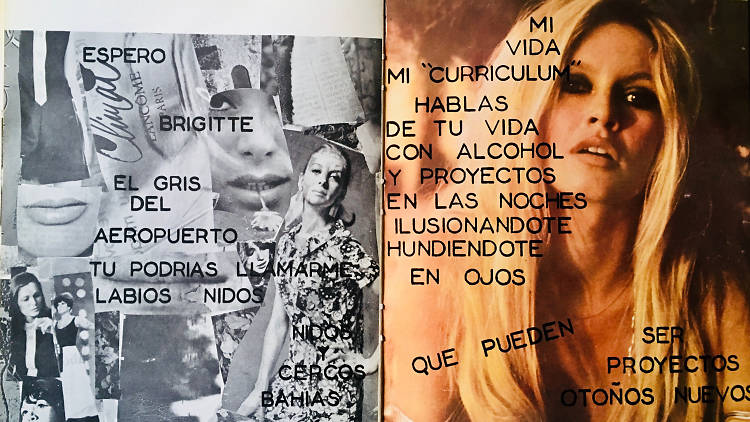
The camera to make poems
From Lorca to Brossa, from Kavafis to Neruda. This exhibition tells us about the relationships that are established between photography and poetry, starting with a selection of Ibero-American books in which the alliance of these two disciplines is essential. Photographs that turn a poem into a photo story, poems that invade photographs, photographers who make poetic anthologies, photographic poems and poetic photos.
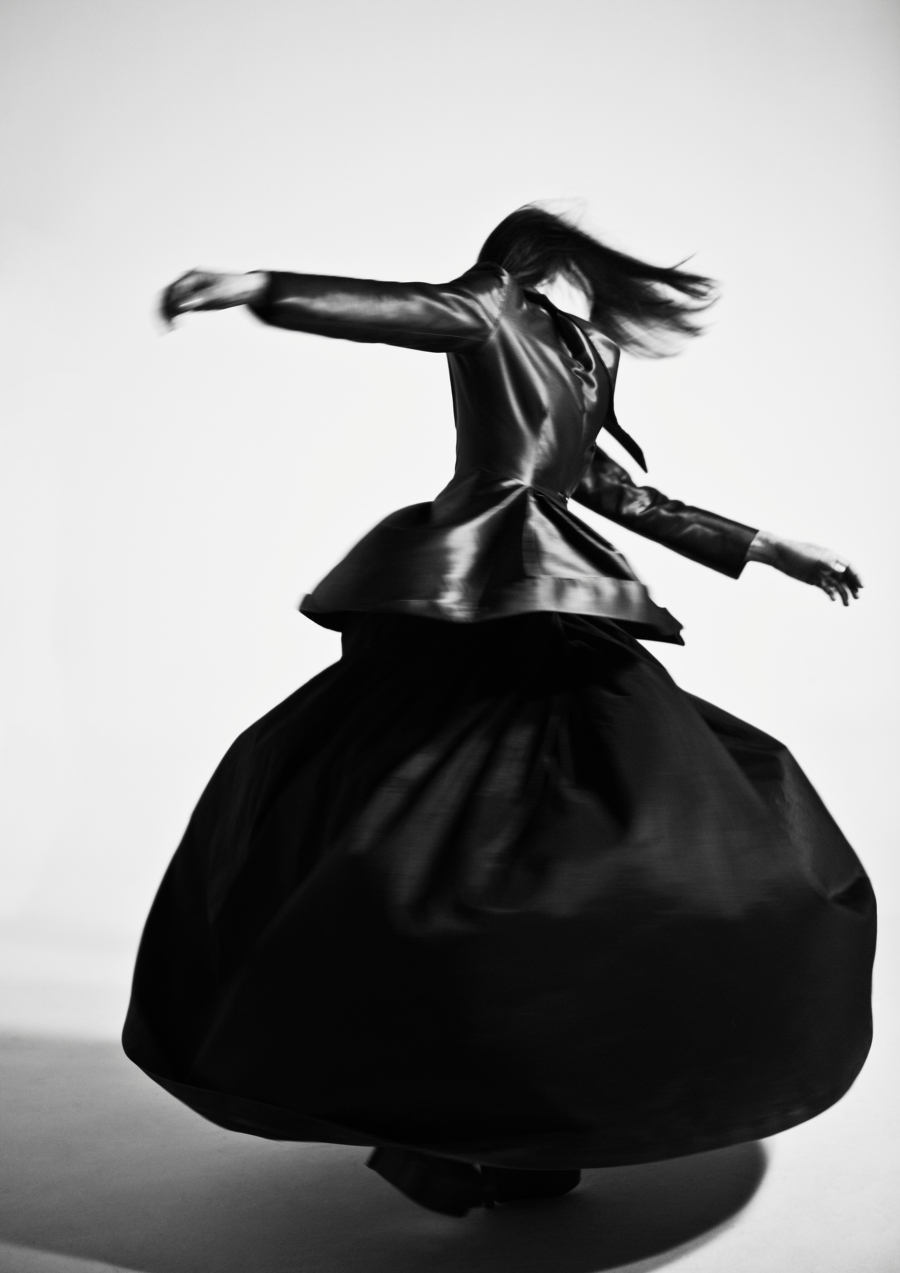
Fashion! Spanish design through photography
Around hundred photographs dialogue with exclusive designs in this exhibition that pays homage to Spanish fashion. Great international photographers like Richard Avedon, Henry Clarke or Irving Penn fall rendered before the designs of Spanish designers like Balenciaga, Pertegaz or Elio Berhanyer. A relationship that with the appearance of the big fashion brands would place Spanish textile on the international scene. An exhibition that has the support of the Ministry of Education, Culture and Sports and the Costume Museum that unites efforts to enhance Spanish fashion through international photography.
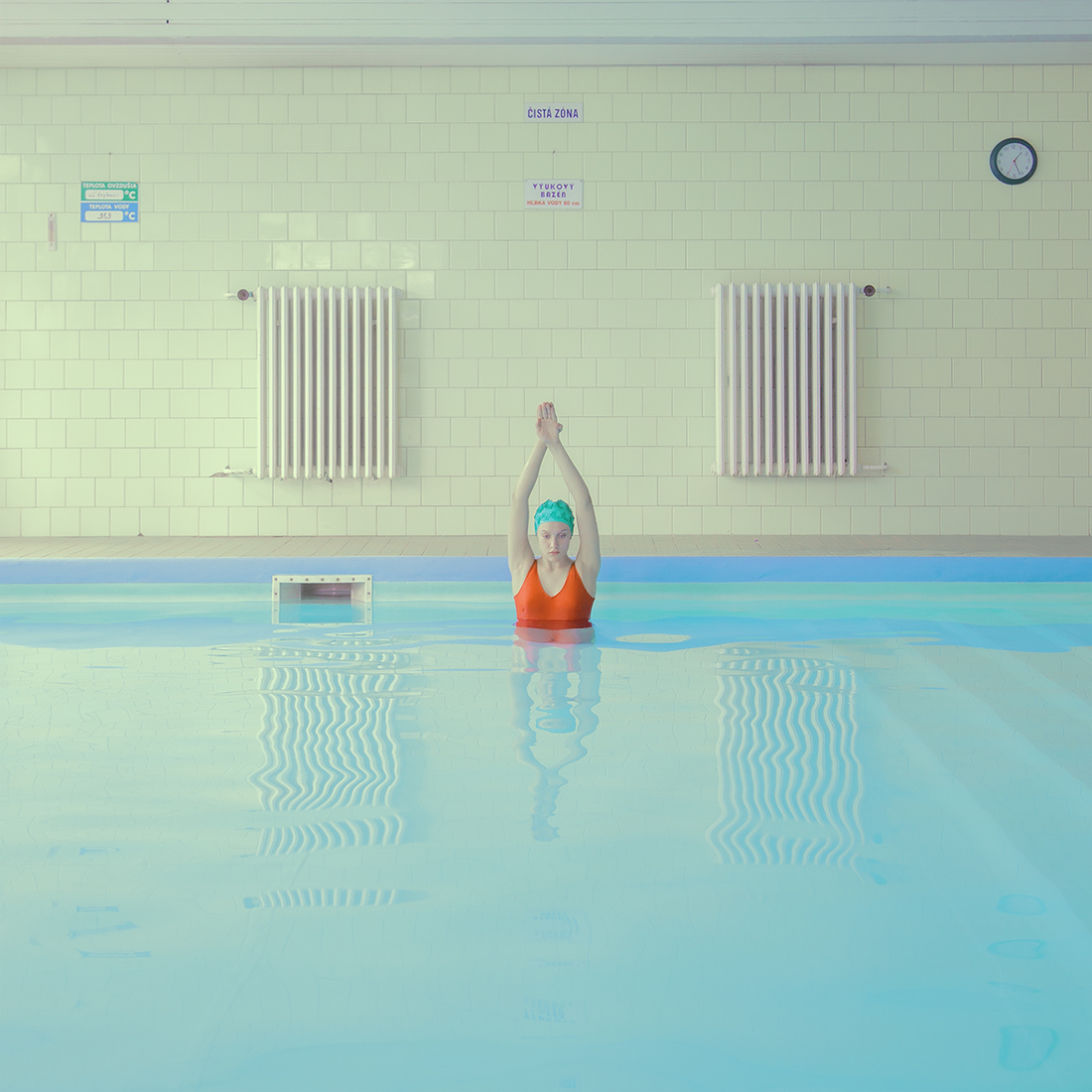 |
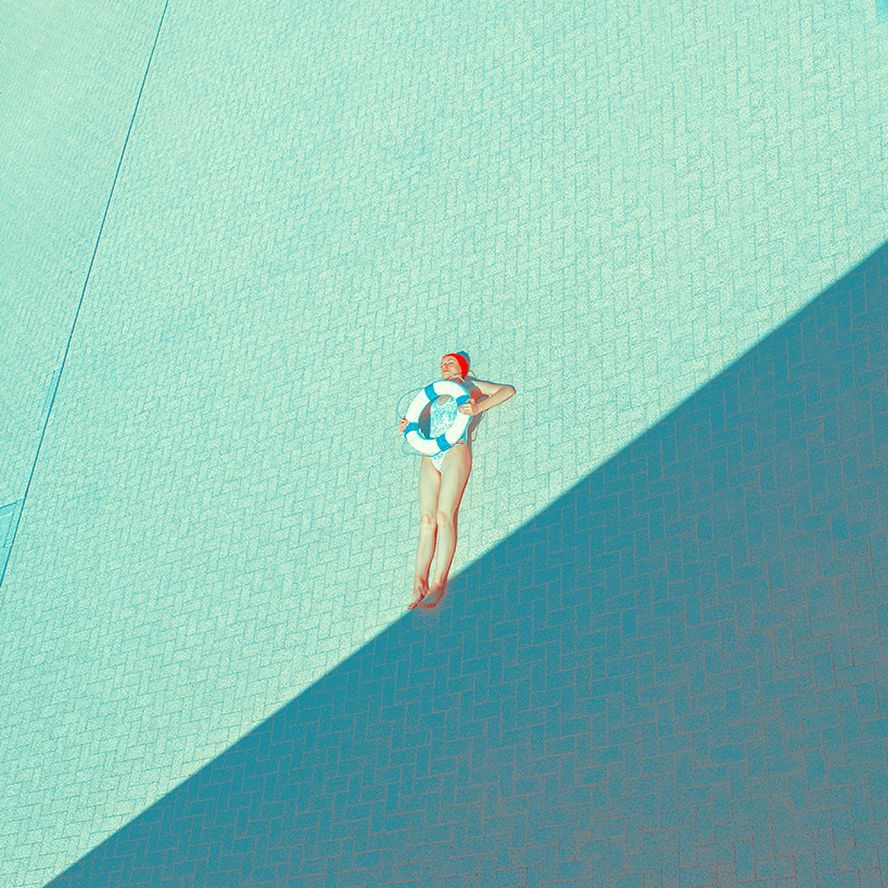 |
Maria Švarbová Swimming Pool
‘Swimming Pool’ is the most emblematic project of the Slovak photographer who started in 2014 motivated by the search of suggestive locations and by her fascination with public swimming pools: her sterile and geometric beauty generates the tone of this photographic series. Despite the retro air of the scenarios, the images evoke a timelessness that moves between a parallel future and a fantastic broken utopia. Precisely, the evocative snapshots of Maria Švarbová inspired Josep Font, creative director of Delpozo, in the conception of the current Spring-Summer 2018 collection, where beyond its similarity with the tonalities (turquoise, green water, coral …) there is a nod through silhouettes with dresses with ruffles, voluminous blouses or tops with pleats that make up this aquatic universe. The exhibition can be seen in the firm’s boutique in Madrid (Lagasca, 19) until August 26th.
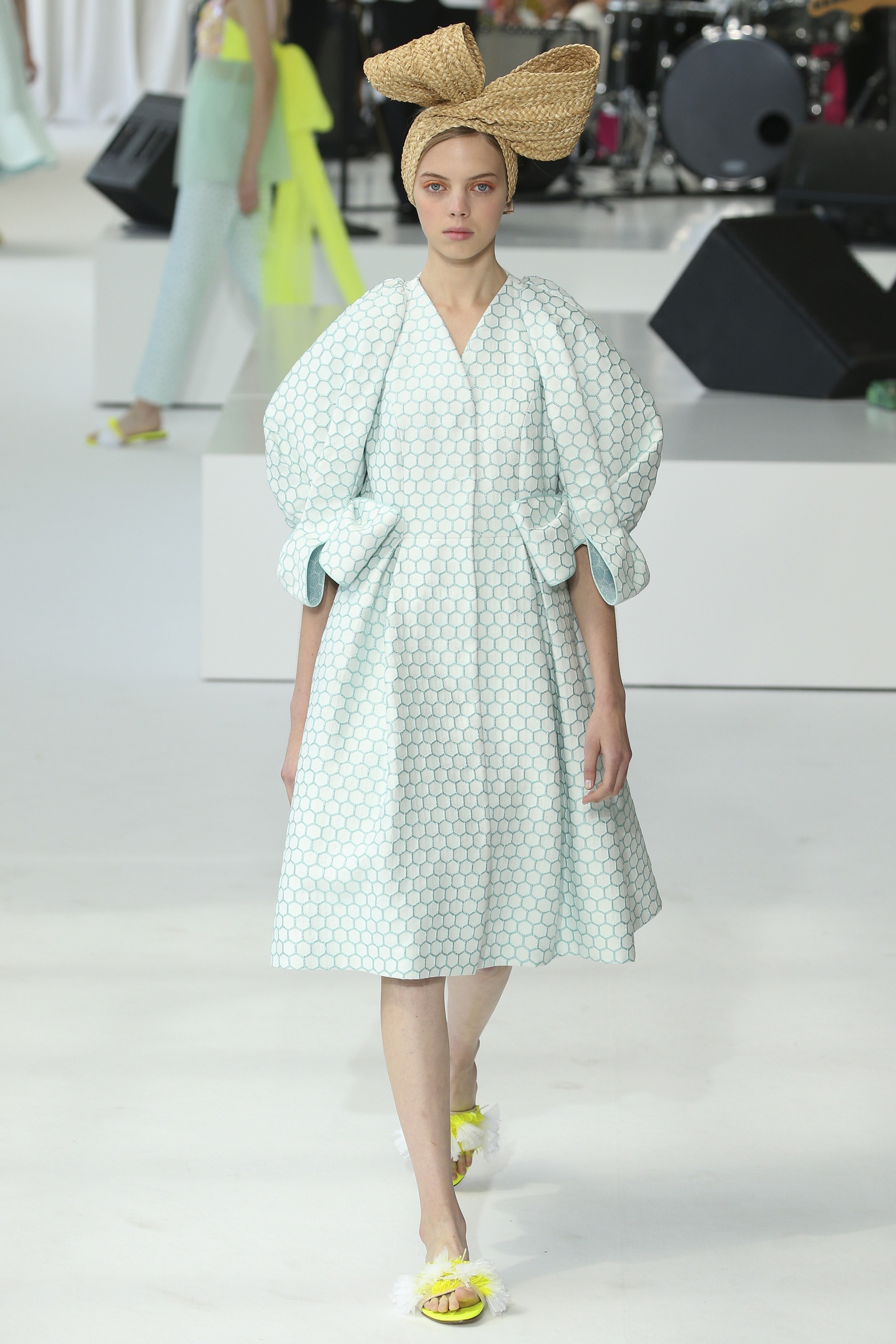 |
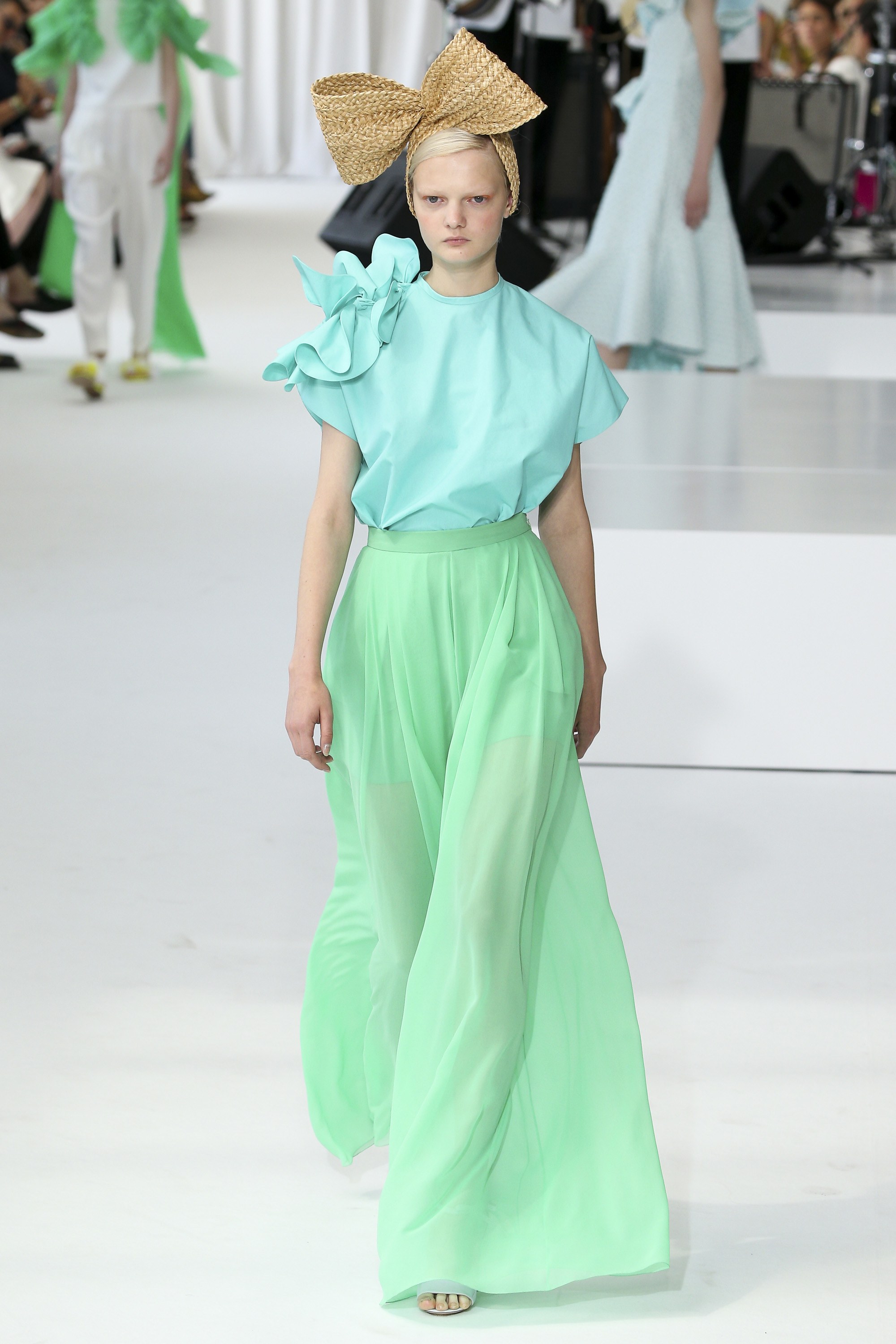 |
(Español) El 080 Barcelona Fashion más marítimo
Gr4tcBCN14!
The resurgence of MODA-FAD

2018 is the year of the new MODA-FAD . Located in the Disseny Hub de Barcelona, the fashion association integrated in the FAD (Promotion of Arts and Design) gives voice and visibility to local designers. It is an entity formed by fashion professionals from different areas, from clothing to footwear, which presents initiatives that help to give continuity to designers with a commercial vocation, a titanic task in these times.
In April MODA-FAD emerged with a new board of directors and with commitments, challenges and projects that value the professionals of fashion, design and craftsmanship that we hope will set a new clarion cry. In this first stage of the association the designer Edgar Carrascal assumed the presidency accompanied by his right hand, Mireia Playà, who specialises in vegan footwear. Also participating in the initiative are Elisenda Oms and Elisabet Carlota of Carlota Oms, Antonio Calderón and Pau Esteve.
The spirit of the new Association for the Promotion of Fashion makes clear its intentions to defend the Barcelona brand and to seek internationalization, to contribute to the business development and the industrial fabric of the country and the “dignification” of trades related to fashion. It also has the didactic aim of sharing knowledge and assuming a teaching role in the consumption of fashion, aiming to provide the necessary tools for conscious and sustainable consumption.
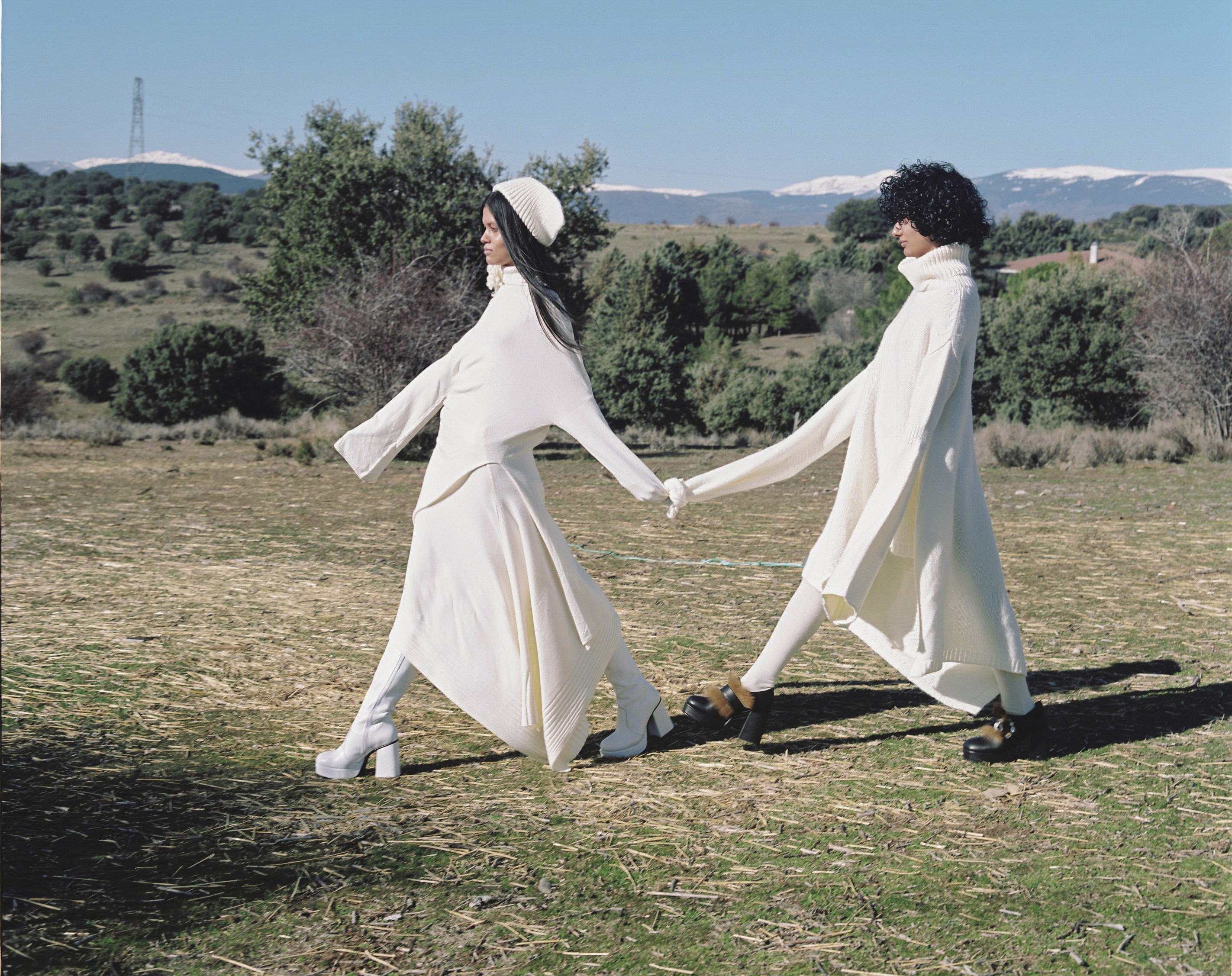
The MODA-FAD Awards
Within the framework of Barcelona Design Week, the new MODA-FAD Awards are to be promoted in a ceremony and afterwards a party that will take place next Wednesday June 6 in the Disseny Hub Barcelona. Awards are aimed at recognizing the work of professionals and companies in the world of fashion and who have made contributions to the sector during the last year. In total prizes will be awarded in three different categories: Merit in Fashion Design, Merit in Fashion Innovation and Talent of the Year Award. Special recognition will also be granted to a designer or brand that is not active, but whose contribution in the fashion sector is valued.
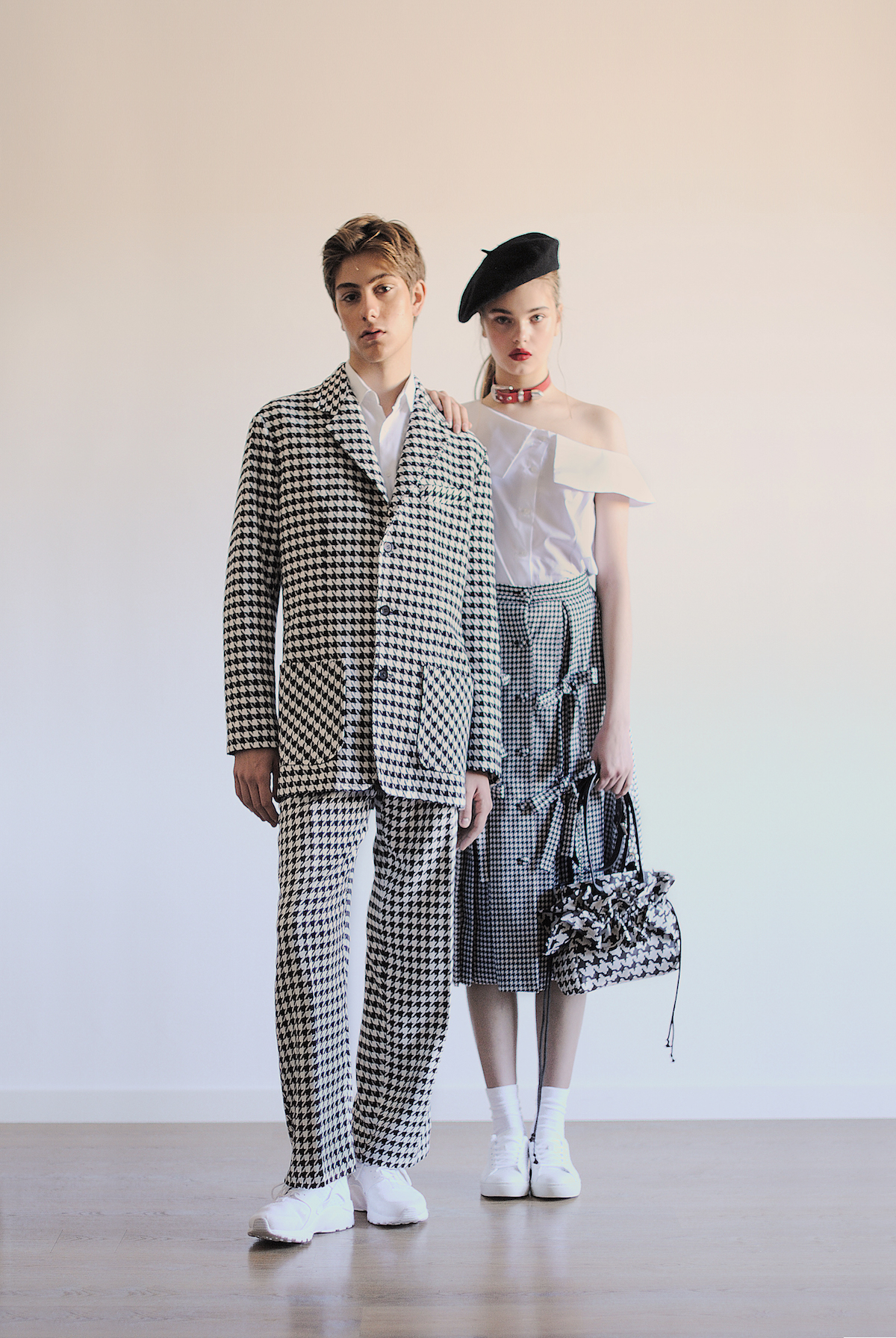 |
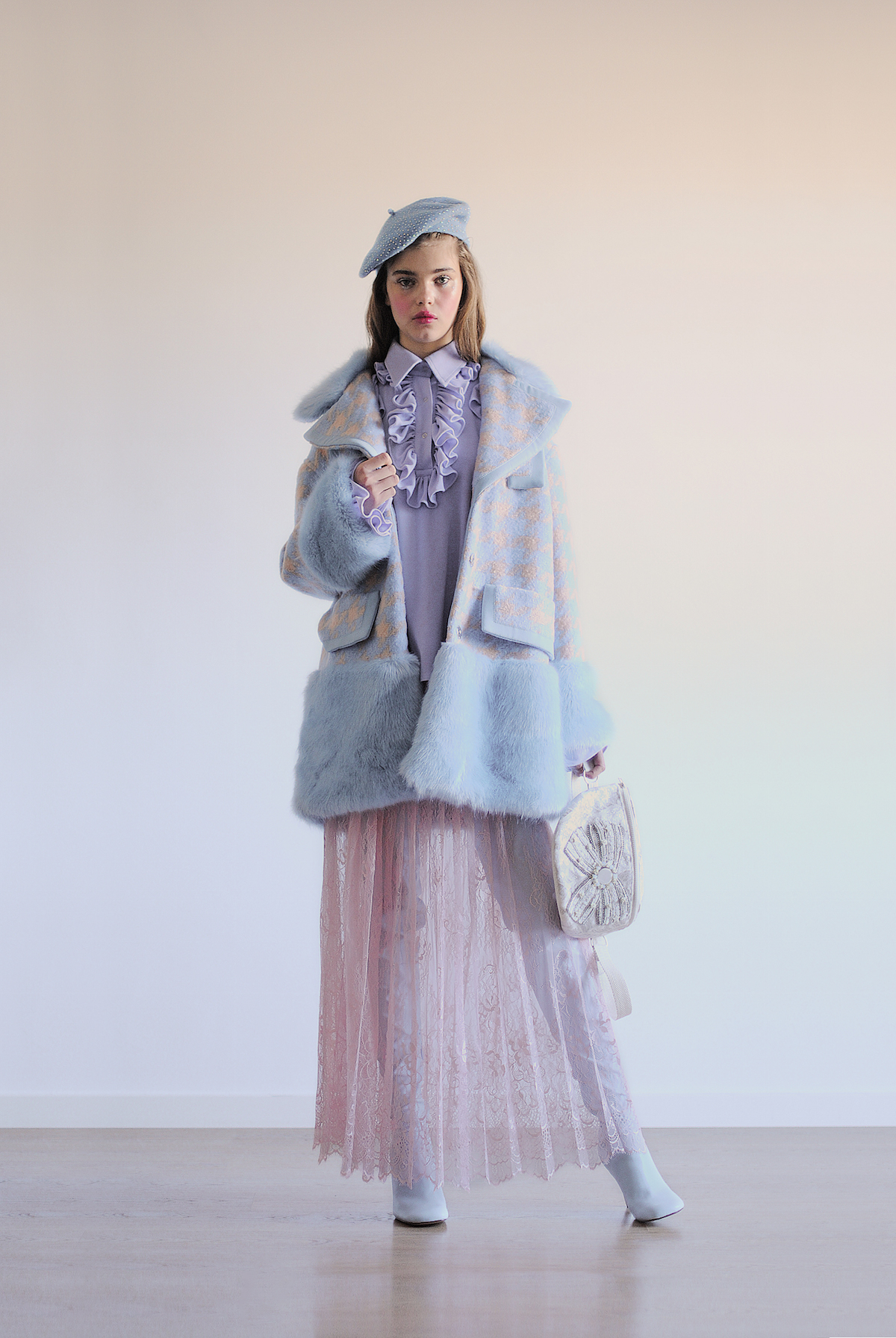 |
The winners
In this first edition the designer Víctor von Schwarz with his Double Life collection, 2018 is the winner of the Merit Award in Fashion Design . His tendentious presentation highlights the precariousness of the sector and the difficulties faced by emerging designers, “the new generation” whose double life between creativity and reality usually lasts no more than 10 years. As a representation of this ‘Double Life’ the collection is divided into two parts: one purely in black and white with shapes that are inspired by office attire, the other more imaginative with glitter, voluminous shapes and pastel shades.

The Merit Award for Innovation in Fashion goes to Piñatex ® by Ananas Anam, a company that is developing a product in which commercial success is integrated and social, ecological and cultural development is promoted in parallel. Working from this perspective, Piñatex ® opts for a non-woven natural base material that consumers can use as a sustainable alternative. The material is made from pine leaf fibres, a product from the agricultural industry that does not require large amounts of land, water or pesticides to produce the raw material.
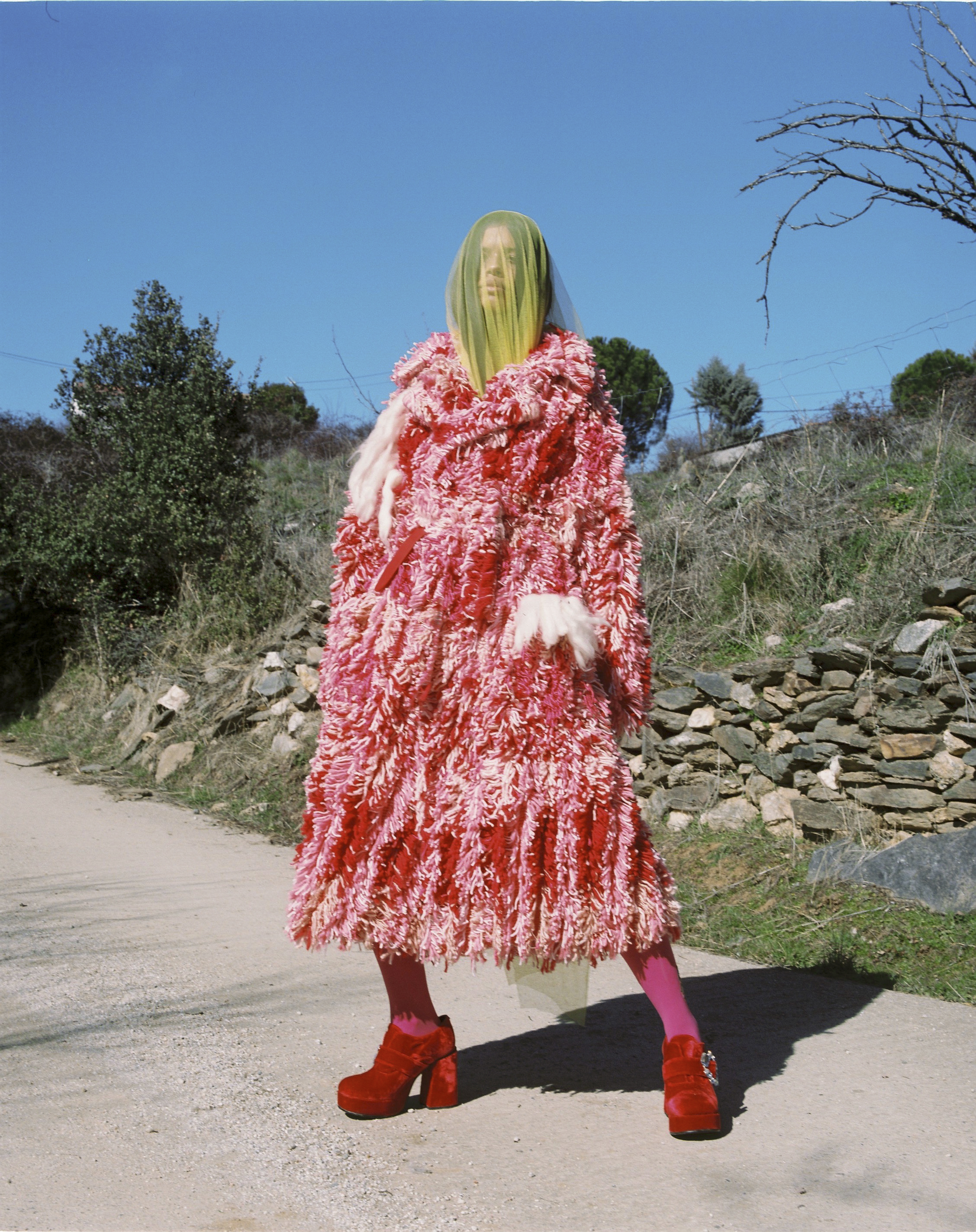
The Talent of the Year Award goes to Pepa Salazar, one of the most promising talents in Spanish fashion. Established in Madrid, this Valencian designer presented her first collection in 2013 for which she won the Mercedes-Benz Fashion Award Talent in the next edition. In the Autumn-Winter 18/19 collection, the designer presents a universe marked by the images of the absurd, fictitious and utopian, belonging to the mythology and paganism of primitive cultures. The jury considered that her latest creation is rich in colours and textures, has character and strength and an identity of its own recognisable in all of Pepa Salazar’s collections.
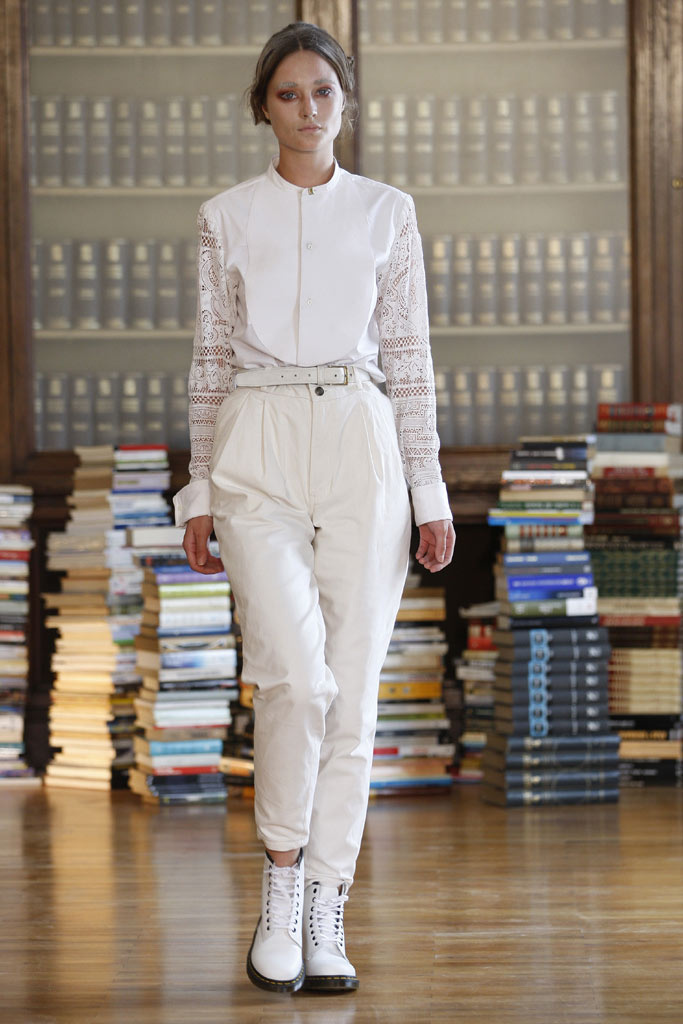 |
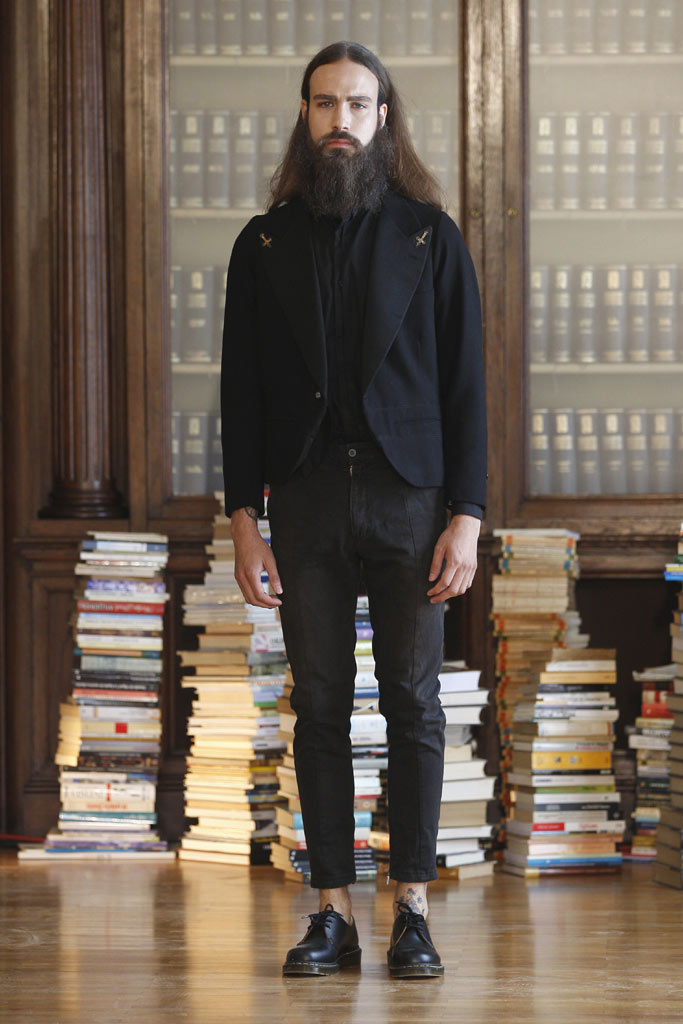 |
Finally Gori de Palma receives the Special Award from the Board of the New MODA-FAD. The essence of the designer is condensed into the industrial and the dense, all within a post-punk filter. Her signature is that of a refined and obscure author, with a perverse touch based on sub-cultural movements.
In the first edition of the awards tribute will also be paid to the figure of the Catalan dressmaker and businesswoman Carme Martí Riera (1872-1949), a professional with strong ideals who fought to dignify the profession of dressmaker, besides being the creator of the Martí System , the first technique of pattern making with a technical rigour that was celebrated world-wide.
Attendees of this annual celebration of Barcelona’s fashion talent will also be able to see the exhibition “The best design of the year”, where pieces by the winners of these awards will be on display. This sample in addition brings together 500 finalist works and winners of the different prizes awarded by the associations of the FAD in the various design disciplines.
The sculptor of the female body
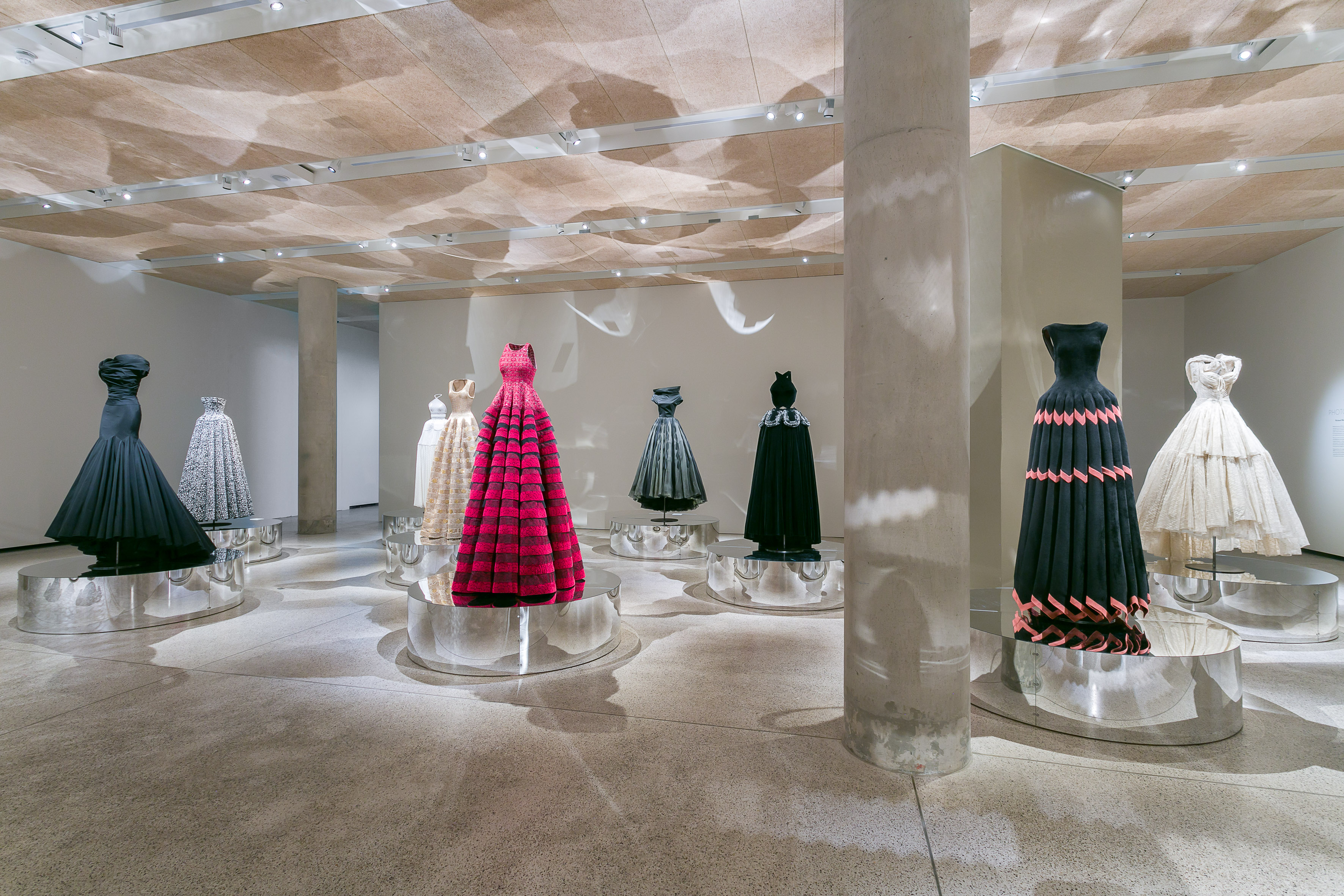
London revives the essence of Azzedine Alaïa through an exhibition at the Museum of Design which pays homage to the career of this master of couture through his most iconic and representative dresses. The Tunisian designer died last November at the age of 77, leaving behind a long legacy that conditioned the making of garments. Known as the sculptor of the female body, Alaïa was a pioneer in experimenting with bold patterns and applying innovative materials to his creations. ‘ Azzedine Alaïa : The Couturier ‘ was conceived months before the death of the artist together with Mark Wilson, collaborator and curator of the show on which they worked together . Finally the exhibition opened to the public on May 10 and will be open to visitors in the British capital until next October.
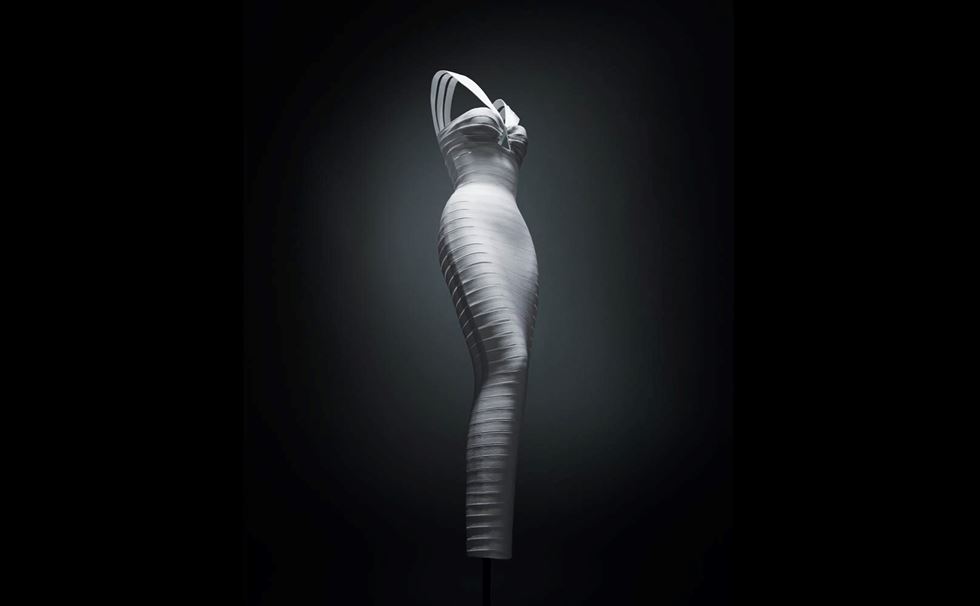
The garment sculptor
Azzedine Alaïa was a fashion designer of Tunisian origin who settled in Paris in the 50s – where he met André Malraux and Joan Miró – to start one of the most prosperous and established careers in the world of fashion. In his first period the designer began working at Christian Dior under the creative direction of Yves Saint Laurent and continued to train in companies such as Guy Laroche or Thierry Mugler before setting up a company under his own name during the 80s. The son of farmers of Spanish origin, the artist used to wear black and made all his textile production in his small atelier – which also was his home – in the Parisian district of LeMarais. It was in the workshop where he began to experiment with the techniques used by the couturiers of the time to perfect them and thus expand their possibilities. He was helped in part by his studies of sculpture and fine arts that gave him a broader vision in the making of dresses which understood the forms and needs of the female body. One of the achievements of the company was actually to mark the sensuality of women through bold garments like tight dresses with marked waists, skirts that played with ruffles, the use of skins, latex and metallic mesh with a net effect as his main fabrics. Alaïa was also the first to reject the traditional fashion calendar, showing his collections when he thought they were ready. He himself made all his clothes by hand, cutting the patterns meticulously. He was famous for his obsession with perfection and total dedication to his craft as a couturier.
From the beginnings of the company, the Tunisian designer produced exclusive dresses for Parisian high society and in a short time his name became popular throughout the world. Grace Jones and Greta Garbo were just two of the celebrities closely associated with the designer in the 80s and 90s, and the model Naomi Campbell became the muse of the firm. The new millennium brought with it the birth of a new generation, where Alaïa positioned himself as one of the designers of reference for Kim Kardashian, Rihanna or Lady Gaga.
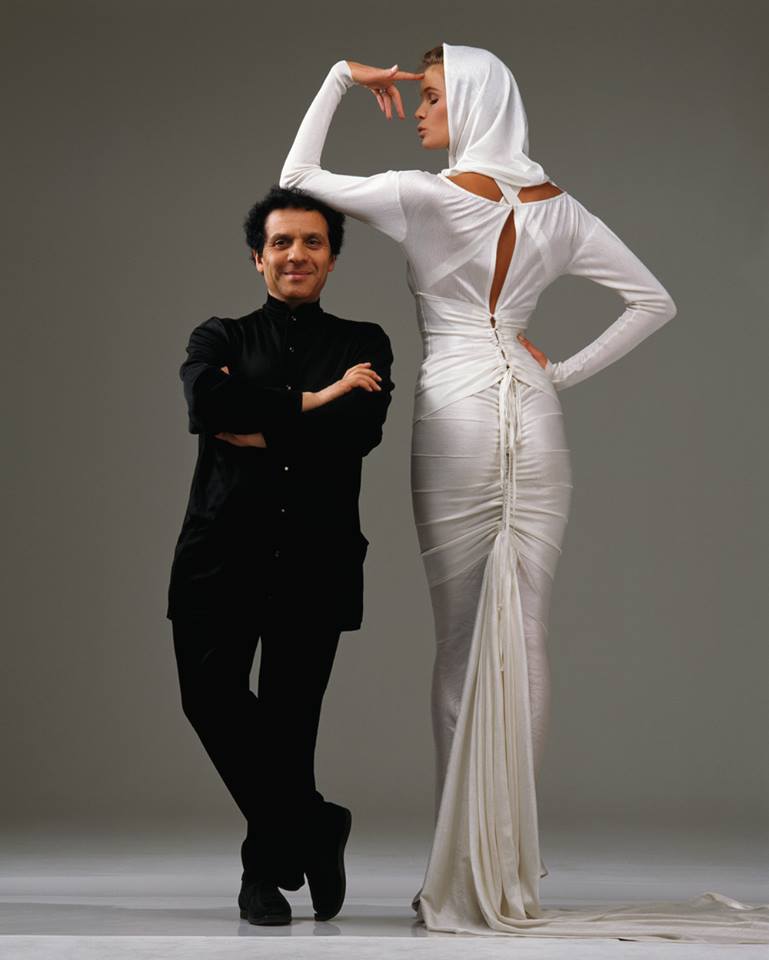
A multidisciplinary exhibition
The more than 60 garments exhibited in the British capital are grouped according to the conceptual idea that dominates them, without following a chronological order; they contain examples of his most famous collections, such as “Exploring the volume”, “Fragility and strength”, “Gathered forms” or “Black silhouettes” – which bring together dresses dating from 1982 to 2003-.
‘Azzedine Alaïa :The Couturier’ also has the photograph by Richard Wentworth taken during the couturier’s last months and a series of videos about the Franco-Tunisian, prominent among which is a short film directed by the photographer Ellen von Unwerth , which portrays intimate moments of the artist at the beginning of the nineties.
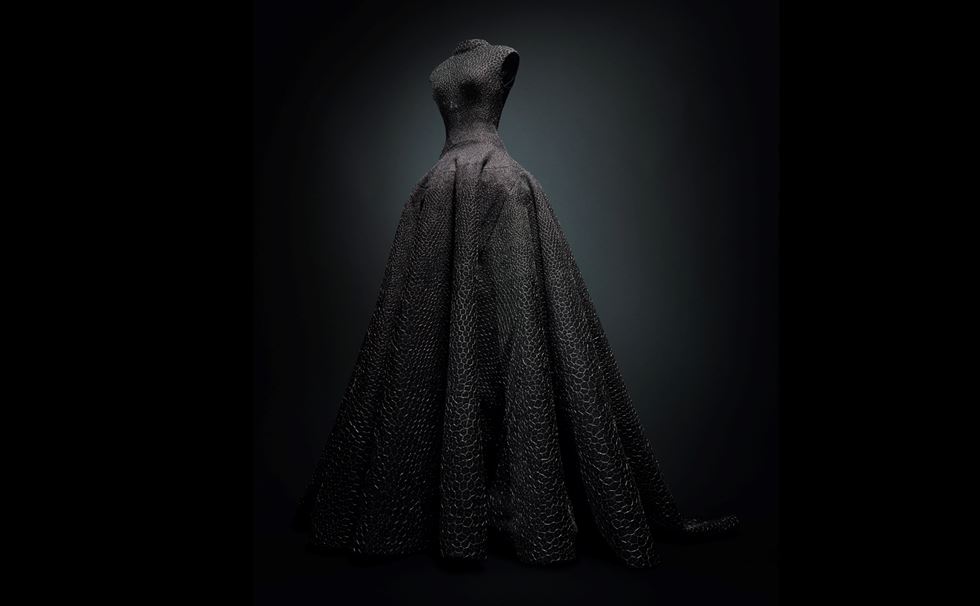
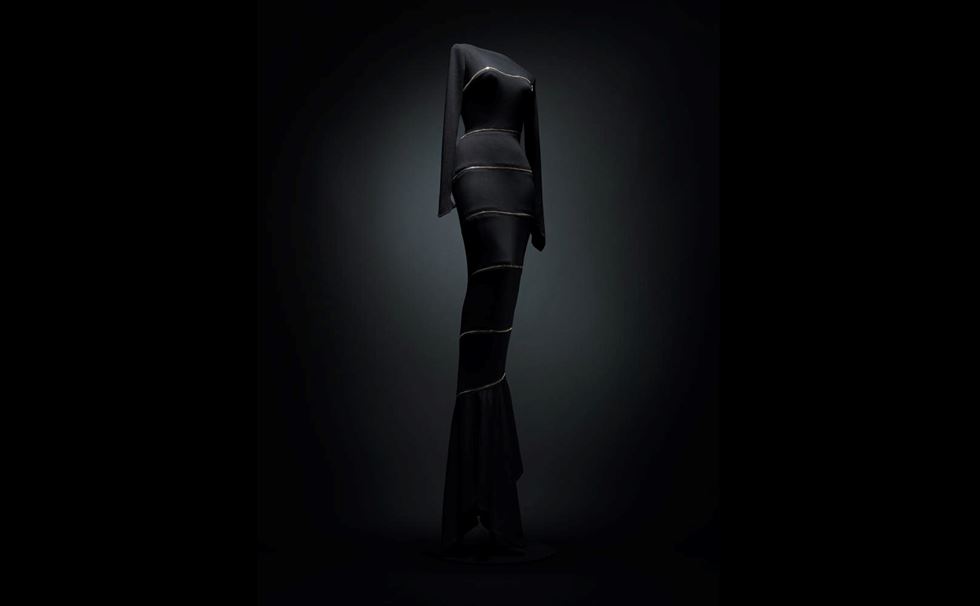
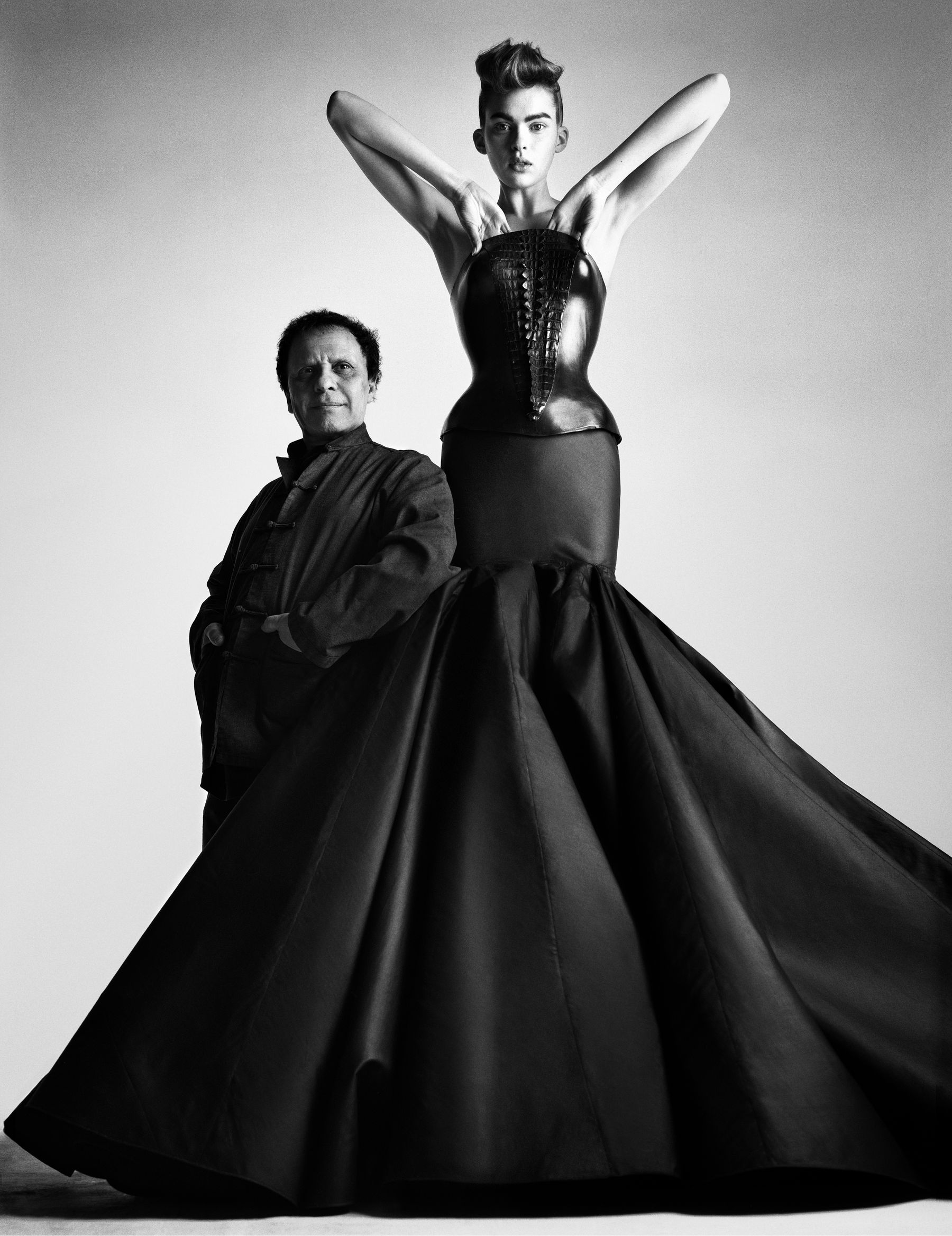
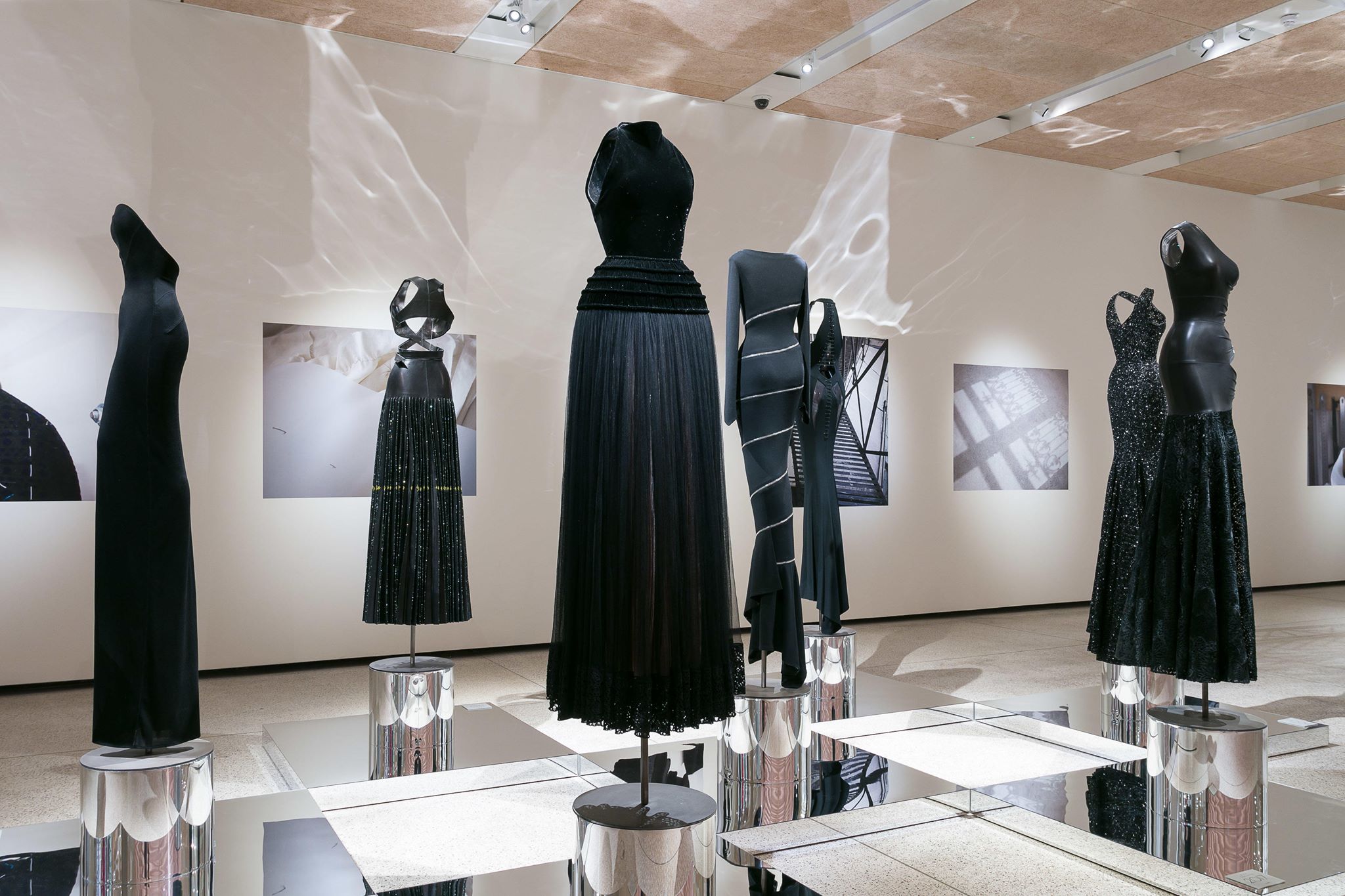
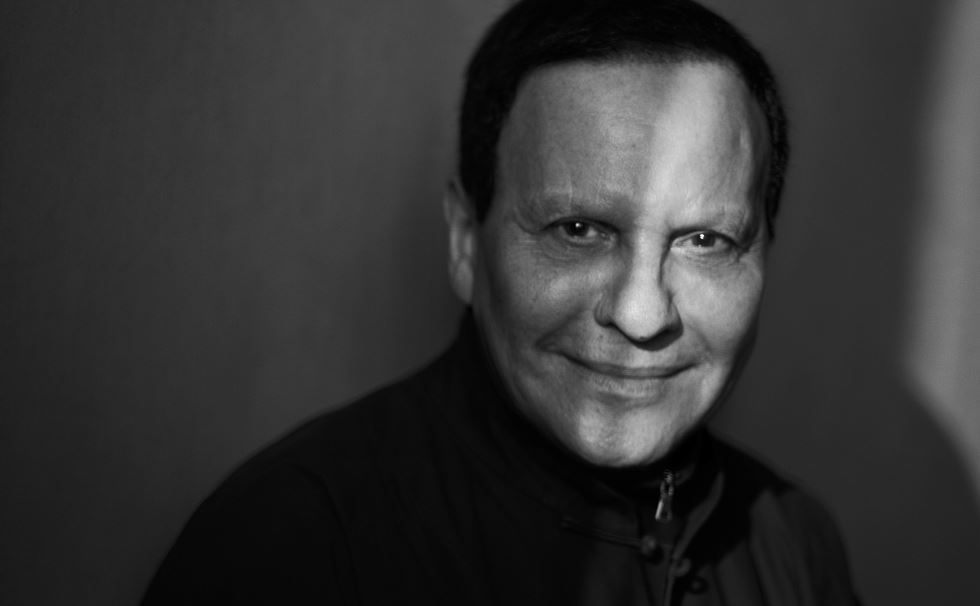
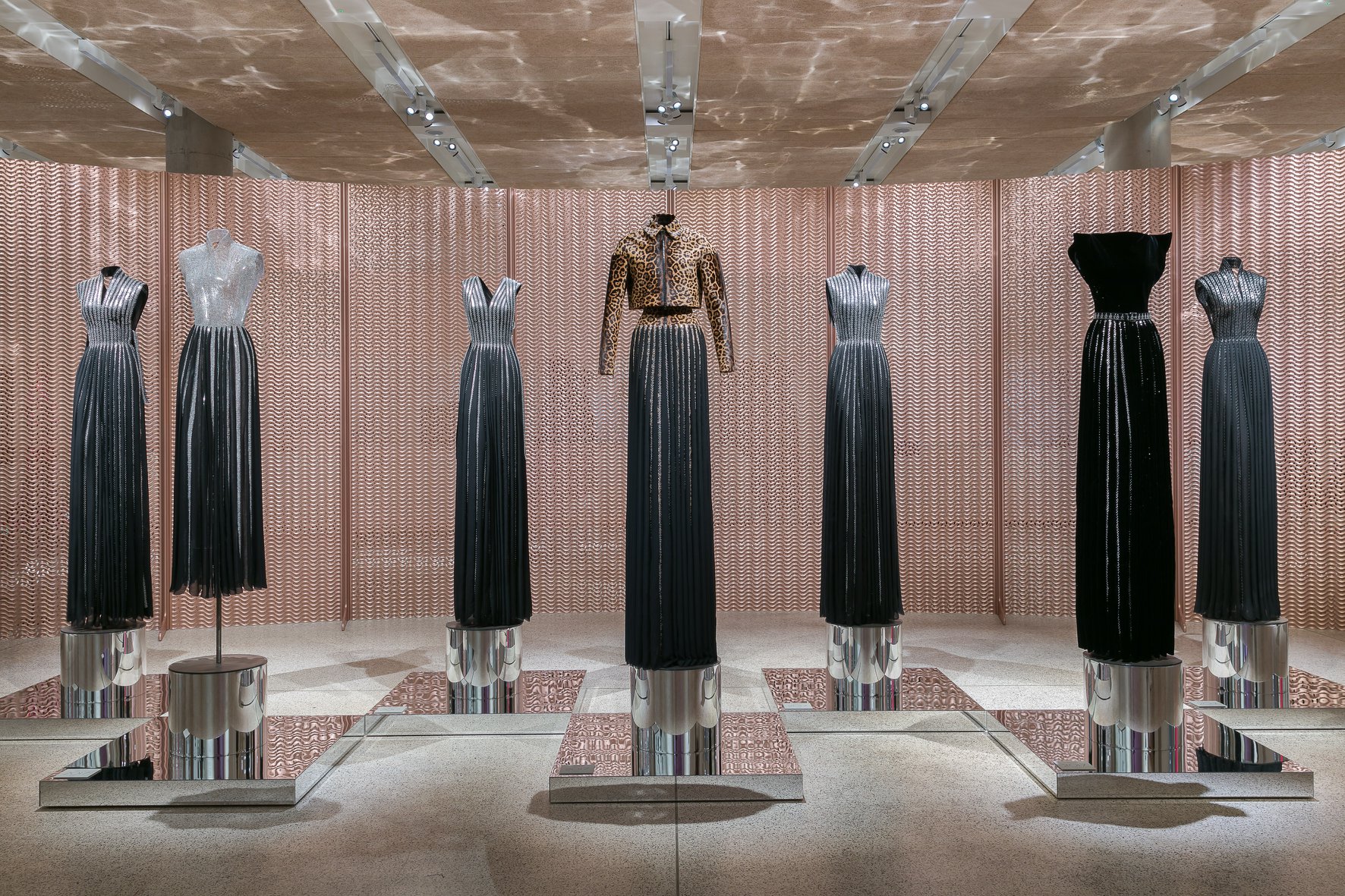
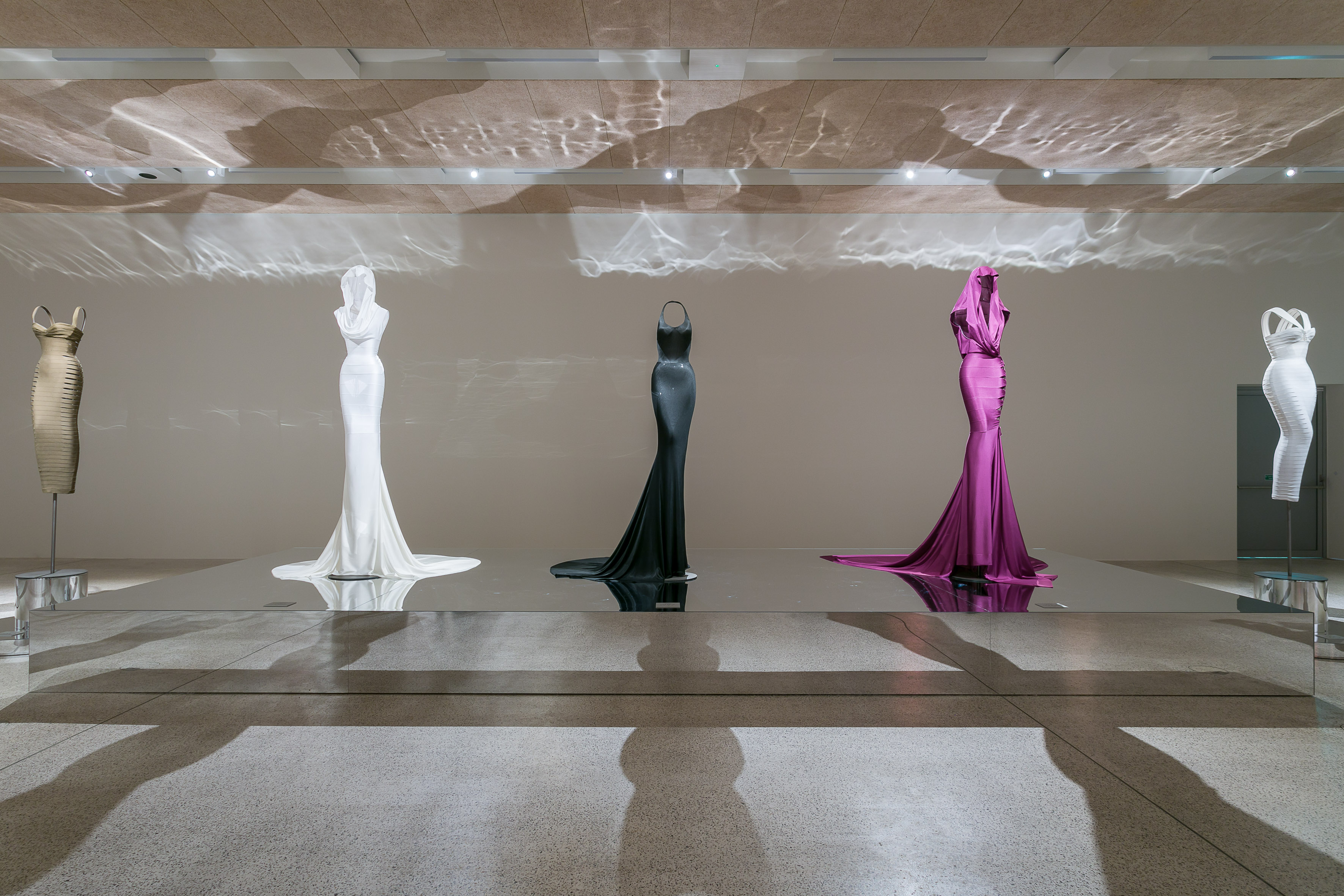

(Español) París desvela la primera retrospectiva de Martin Margiela
The legacy of Givenchy
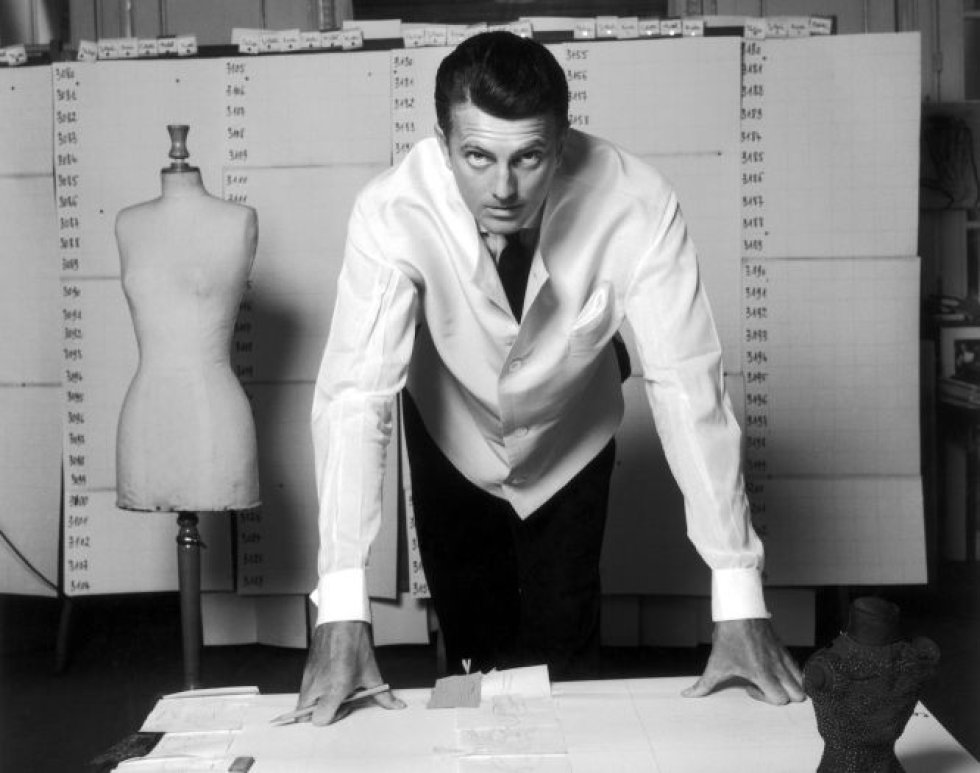
Something hurts in the depths of the fashion industry when one of the great masters vanishes.It is as if the end of a prosperous cycle or a stage of great achievements is over to give rise to uncertainty.The nostalgia of thinking that any past time was better is a bad companion.
This week, the sector has lost one of its top representatives, Hubert de Givenchy.The French couturier died in his sleep on Saturday aged 91. Givenchy defined himself as “The eternal apprentice”, he left this world whilst dreaming.It’s funny how visionaries do not stop dreaming until their last breath.
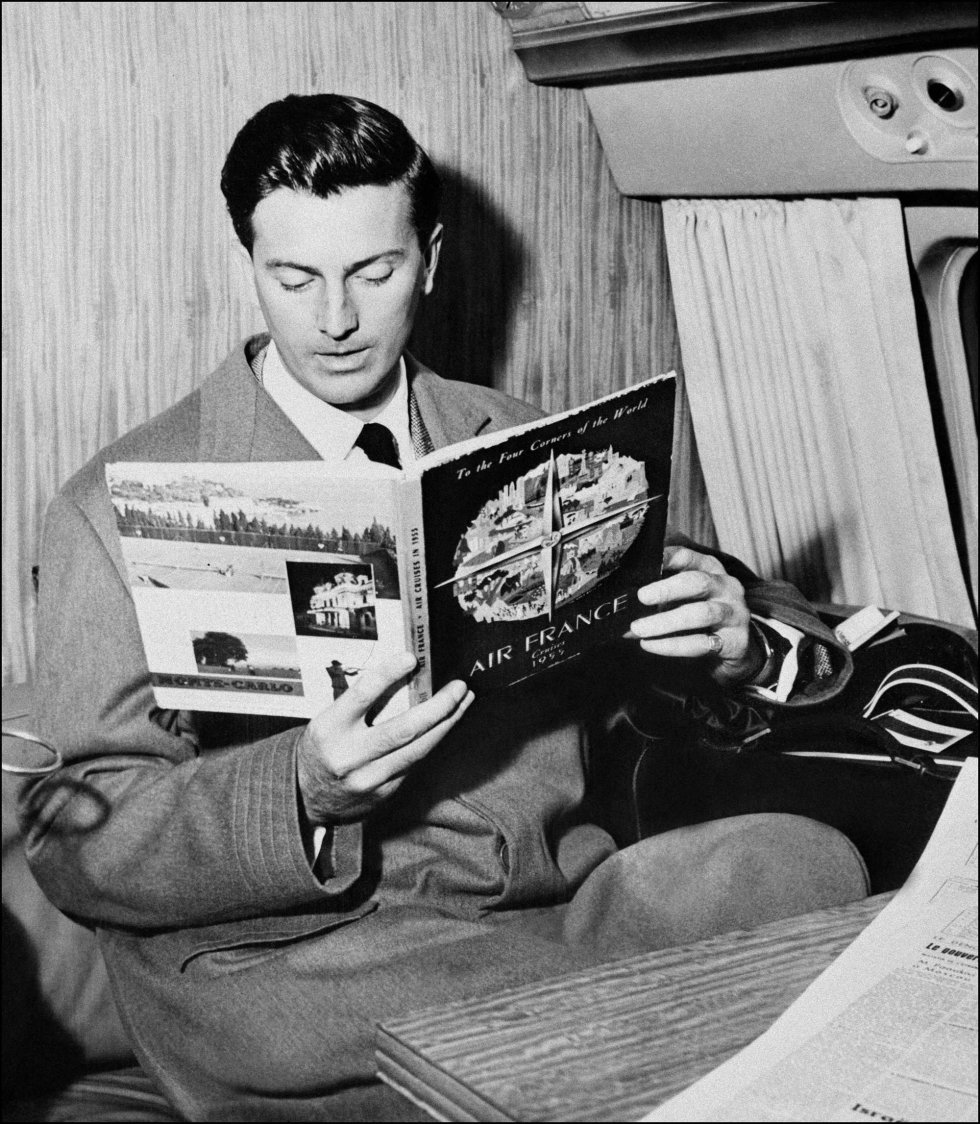
A career between fabrics
Hubert de Givenchy was born on 21st February, 1927 in Beauvais in a Protestant family belonging to the French nobility. His father died when he was two years old and the designer was raised with his mother and grandfather who owned a tapestry factory in which he also collected fabrics, furniture and other typical objects of the time. As he recounted on multiple occasions, from very little he wanted to dedicate his life to the world of the fashion, but it was not a profession that was well seen at the time. In 1944 he left the family nucleus to move to Paris with the dream of being a seamstress. In the French capital he studied at the School of Fine Arts along with other dressmakers such as Robert Piguet or Elsa Shiaparelli. Shortly after arriving he opened his own workshop in Paris and did not hesitate, after a short time, to establish his own brand: the Maison Givenchy , which he began in 1952. Two years later he became the first designer to present a line of luxury ready-to-wear that catapulted him to success. It is also at that time, in 1953, when Givenchy met the teacher Cristóbal Balenciaga with whom he maintained a great friendship and always declared himself an absolute admirer. In fact, the French couturier became the promoter of the Balenciaga Museum, founded in 2011 as a sign of commitment for what he considered a source of inspiration. From Balenciaga he inherited a way of doing and understanding haute couture as a symbol of timeless elegance.
After a long career, in 1988 the luxury group LVMH acquired the Maison Givenchy. The creator relegated his position as the firm’s great owner, although he continued to design collections for the brand. Other designers occupied the position of creative director such as Galliano or until recently, Riccardo Tisci .The same Givenchy retired in 1995 with a symbolic parade in Paris. Despite not being inside the circuit, Hubert de Givenchy never disconnected from the sector he loved until the end of his days: “I will stop making clothes, but will never stop discovering. Life is like a book: you have to know how to turn a page. “A great lesson in life from one of the twentieth century needle masters.

The dressmaker (and friend) of Audrey Hepburn
Givenchy dressed up key personalities of the 20th century, such as Jacqueline Kennedy, Wallis Simpson, Grace Kelly, or Carolina de Monaco. His favourite however was always Audrey Hepburn. In fact, beyond the professional, the actress was his muse and friend for years. The first encounter with the Belgian actress arose in 1953 at a key moment. Then, Hubert de Givenchy agreed to lend her several models for the movie ‘Sabrina’ that would be released a year later. That collaboration marked the beginning of all the collaborations that were ton come on and off the big screen. The designer created for the actress iconic designs such as the black dress she wore in ‘Breakfast at Tiffany’s (1961); the creations portrayed by Fred Ataire in ‘Angel Face’ (1957) or the lace piece and black mask worn by Hepburn in ‘How to Steal a Million’ (1966). They had so much mutual trust and admiration, that Givenchy even had a book of sketches dedicated to Hepburn, entitled ‘To Audrey with love’. “I always respected Audrey’s taste. She was not like other movie stars because she liked simplicity, “said his muse’s couturier.
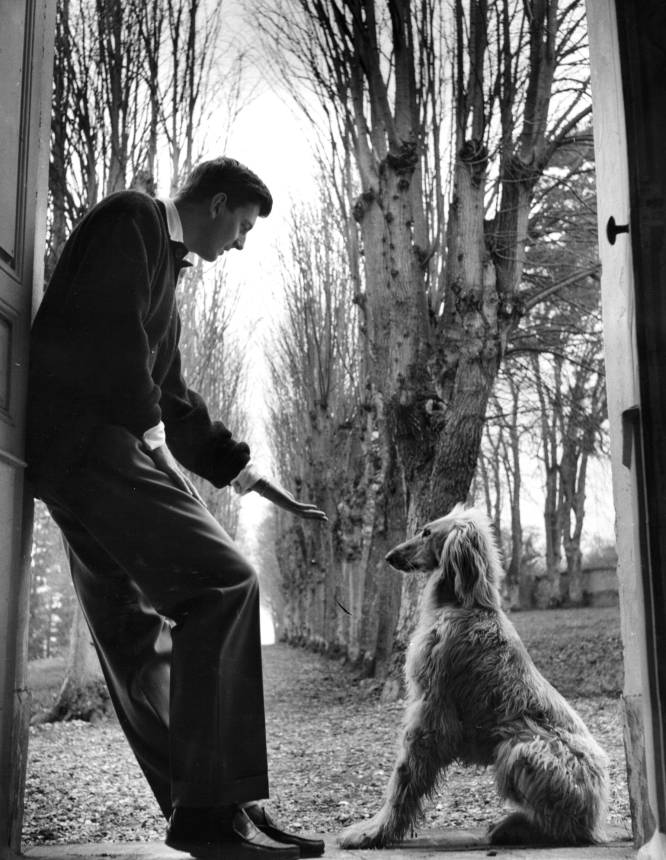
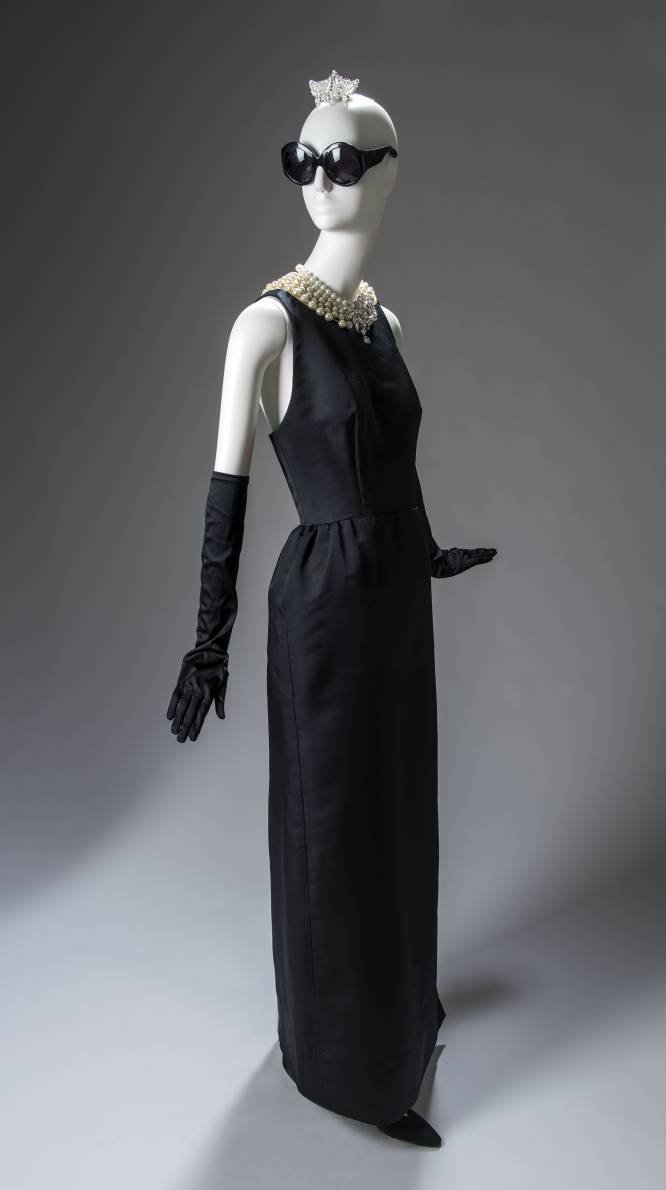
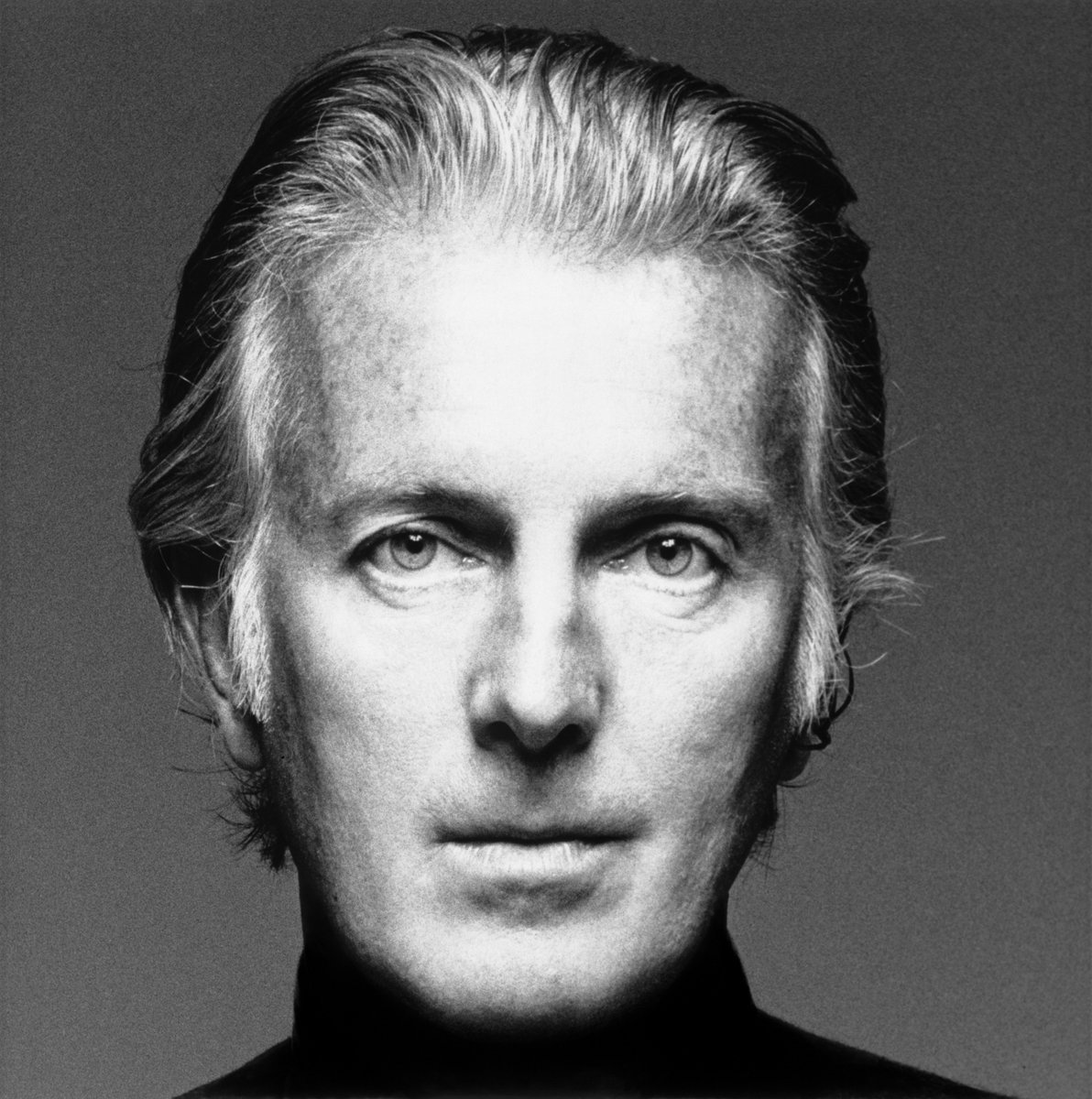
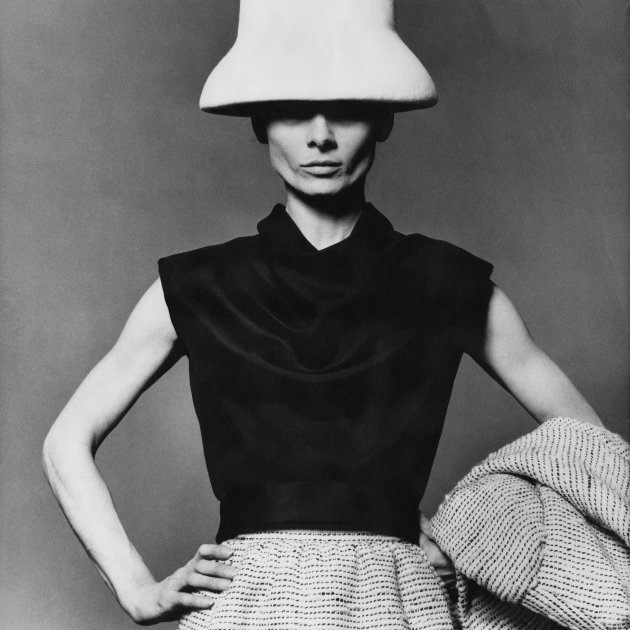
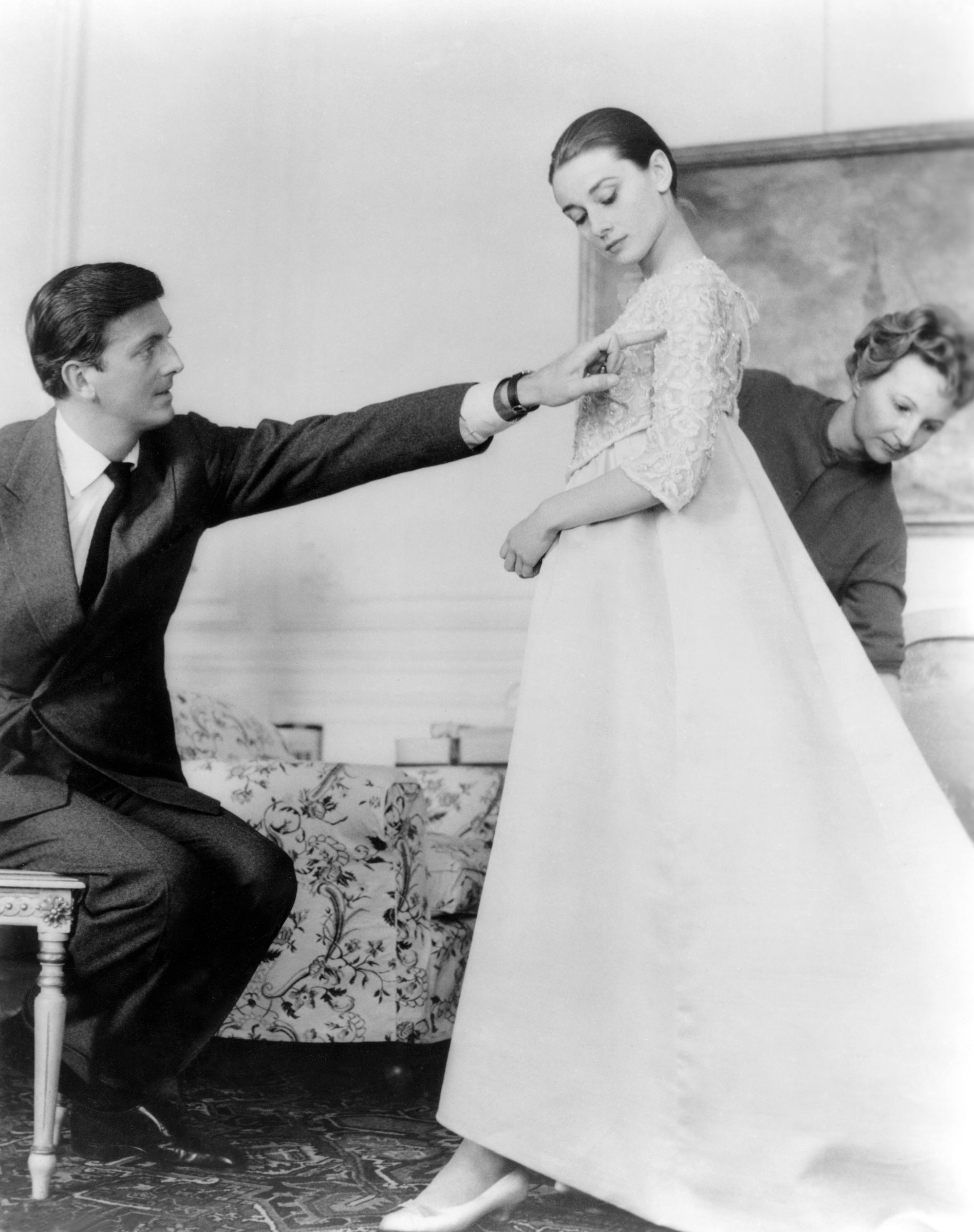
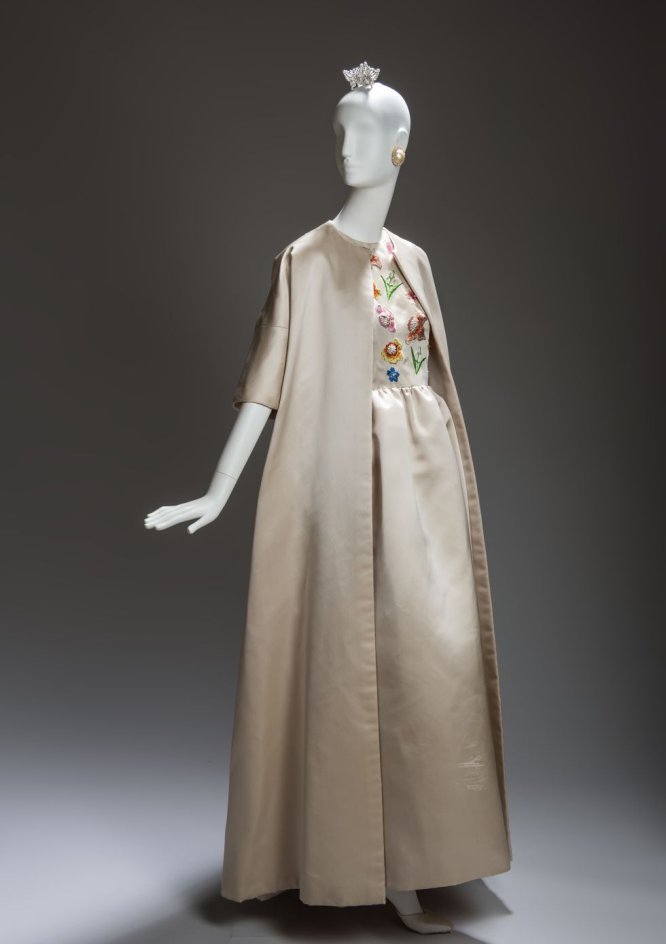
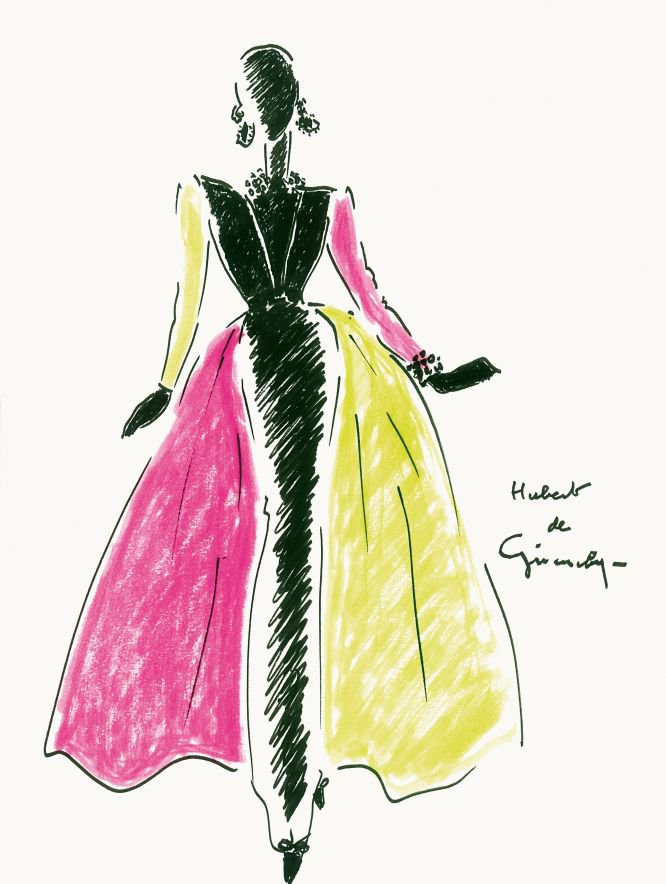
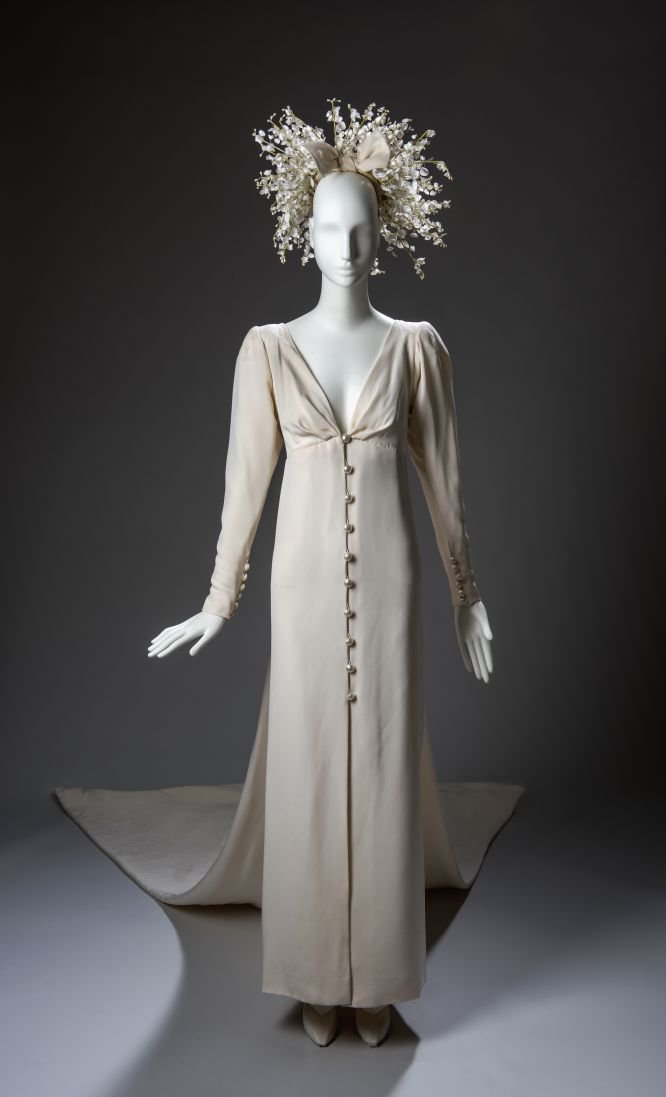
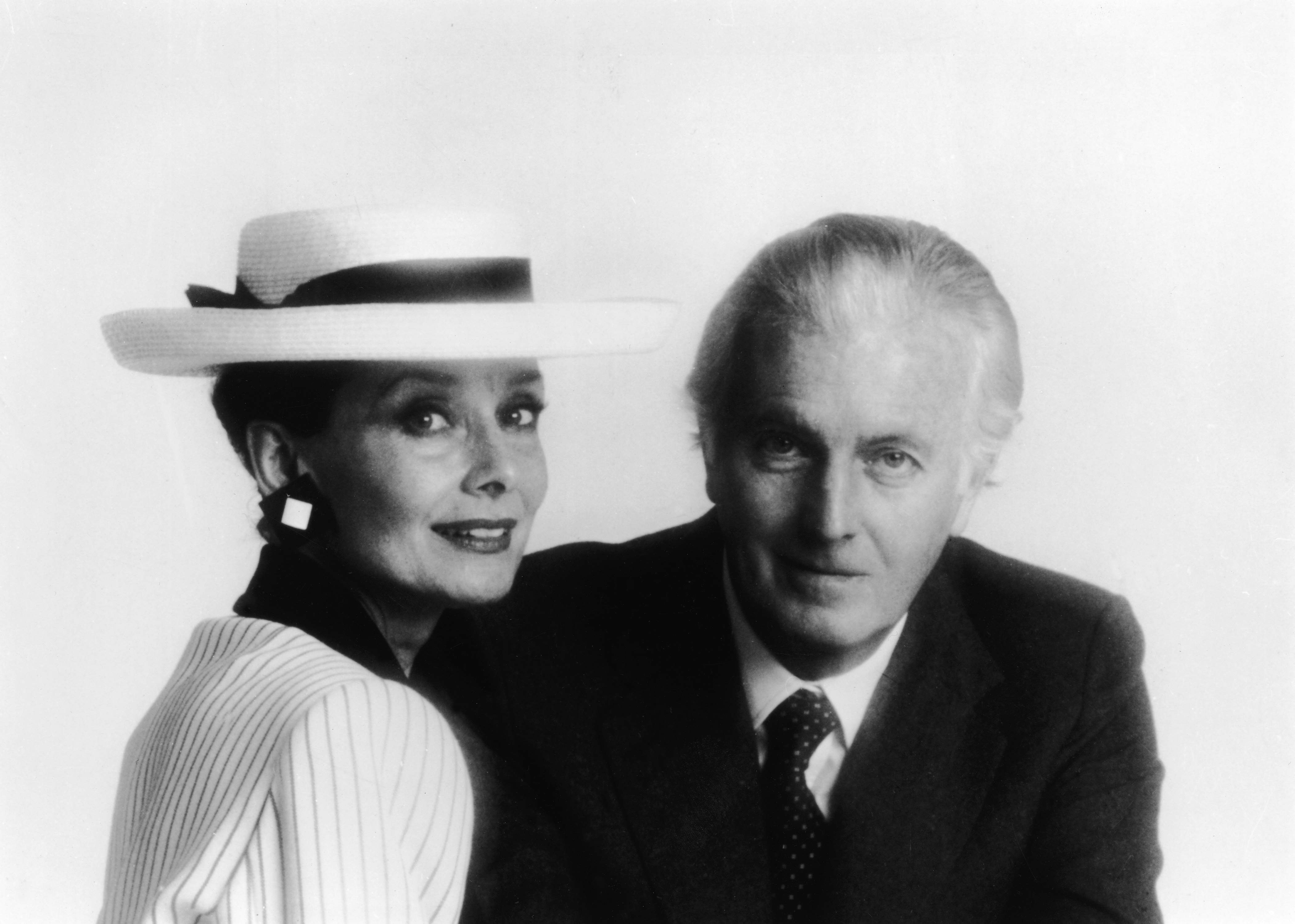
Sorolla and fashion
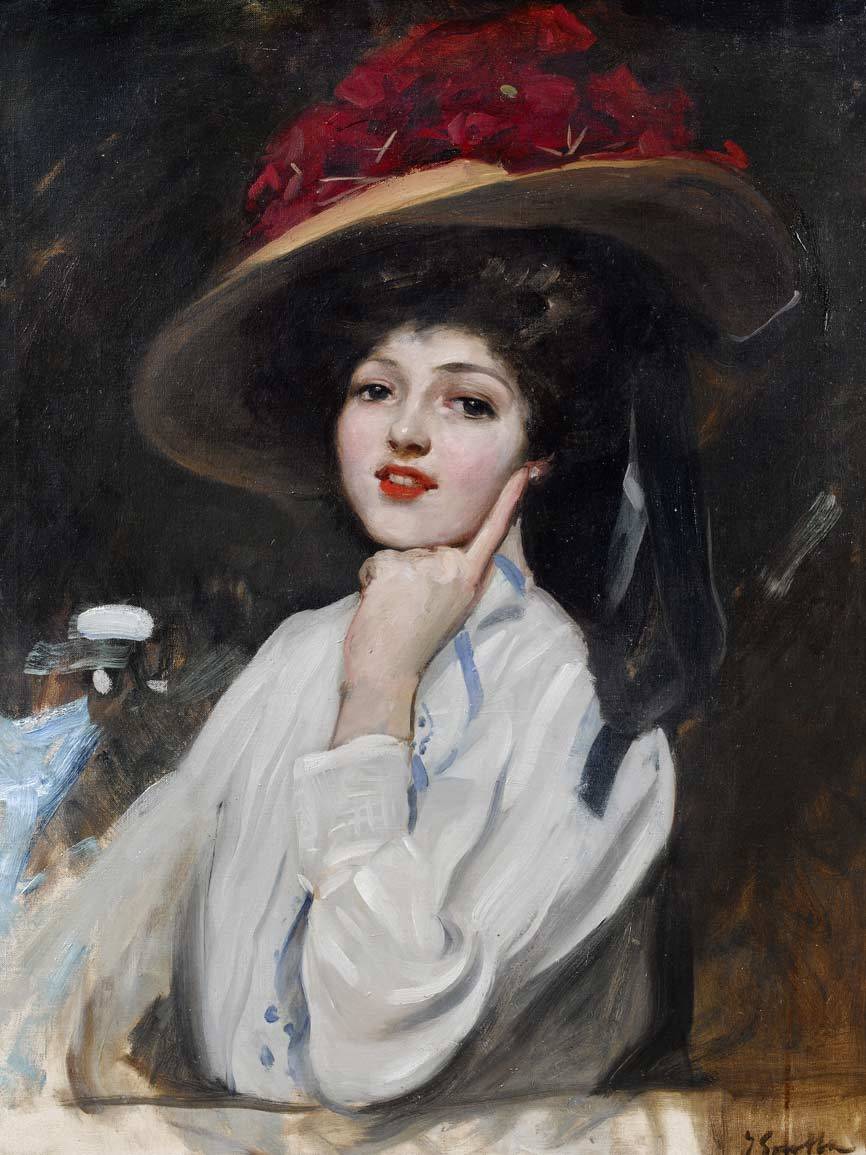
Fashion is art. And as such, it serves as an inspirational canvas to other artistic disciplines such as painting. And especially that of the maestro Joaquín Sorolla, a painter who served as a graphic chronicler of his time, portraying modernity and haute couture at the same time through his works, which were full of aesthetic content linked to fashion.
To do homage to his artistic career, the Thyssen-Bornemisza Museum has organized an exhibition, in collaboration with the Sorolla Museum, which analyzes specifically the influence of fashion on the work of Joaquín Sorolla and which can be seen simultaneously at both venues, from February 13 to May 27.
The exhibition, curated by Eloy Martínez de la Pera, gathers together more than seventy paintings, from national and international museums and private collections -some of them never publicly exhibited-, together with a selection of period dresses and accessories, with valuable items which were also borrowed from important institutions and private collections, many of them unpublished.
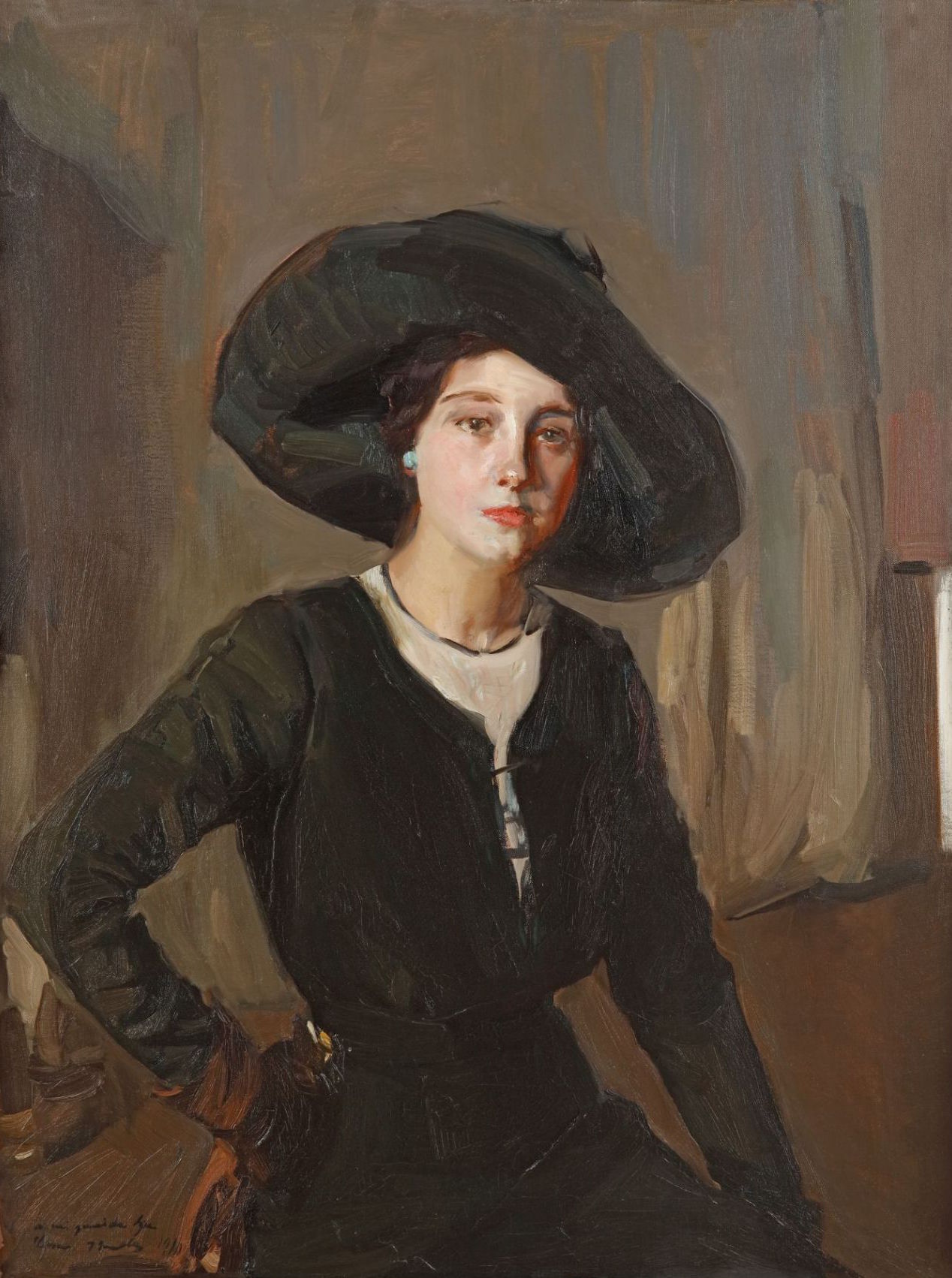
A chronicler of modernity
Sorolla was a great lover of fashion and became the perfect chronicler of changes in the trends and style of clothing that occurred in the late nineteenth and early twentieth centuries. His works in fact bring together an evocative catalogue of dresses, jewelry and accessories, created in his relaxed and vigorous style. Accuracy in the details of the dresses, emphasis on the fabrics and a pictorial catalogue of complements present in the portraits -most of them female- painted by the artist between 1890 and 1920, which go hand in hand with the fashion items located in the different rooms of the museum. Sorolla portrays women, extolling their condition and femininity with looks that inspire confidence and positions that mark a certain empowerment. The Valencian artist conceived of women as independent beings who were not governed by conventions in a style of painting that broke frontally with the classics.
The exhibition is divided into four sections: ‘ Sorolla in private’, ‘ Portrayal of society’, ‘Elegant summer’ and ‘Modern country’, retaining in each block different elements that shape the environment of each theme. It is a unique opportunity to discover in Madrid the work of the artist and his special taste for immortalizing the fashion of the time through his paintings.
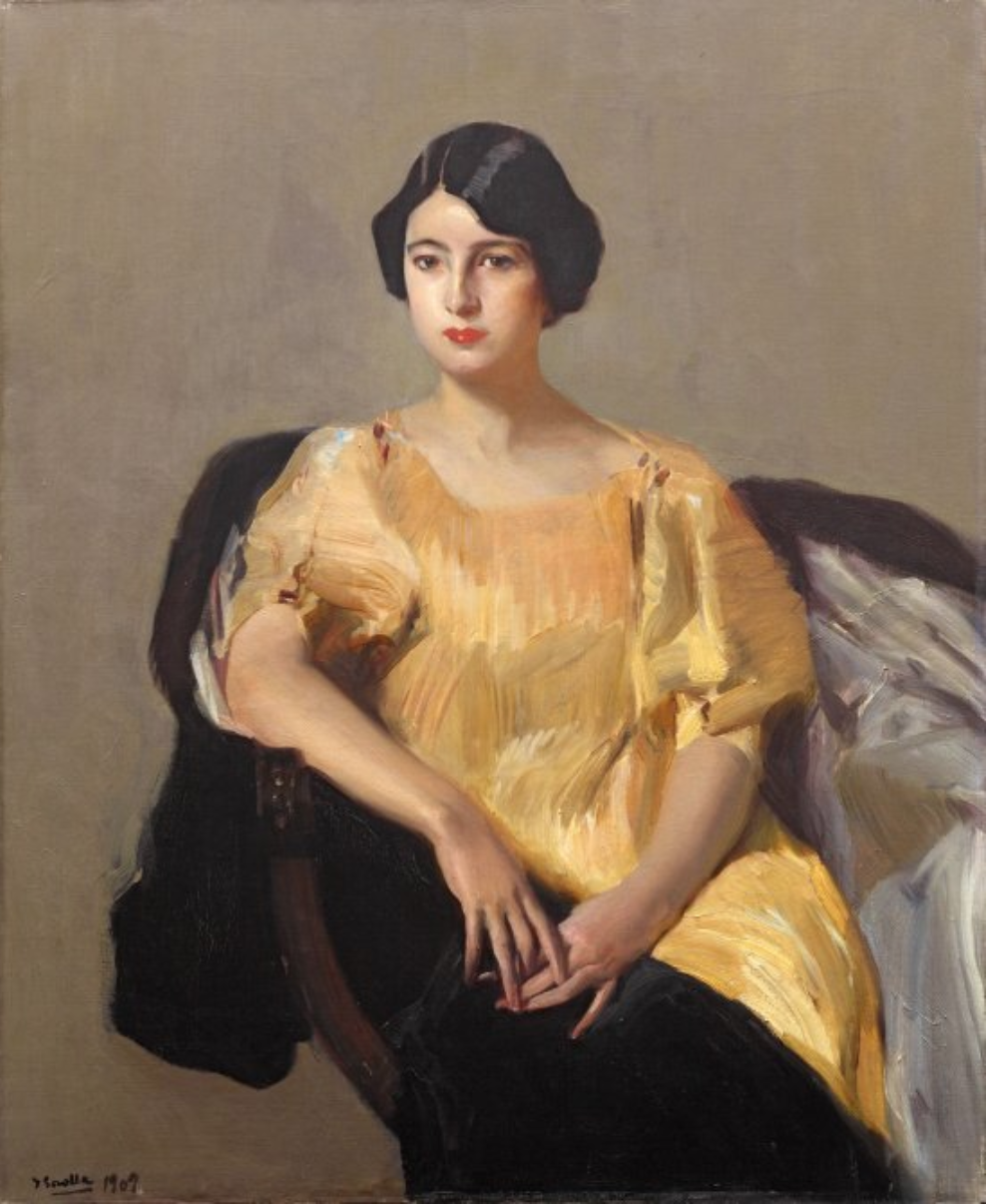
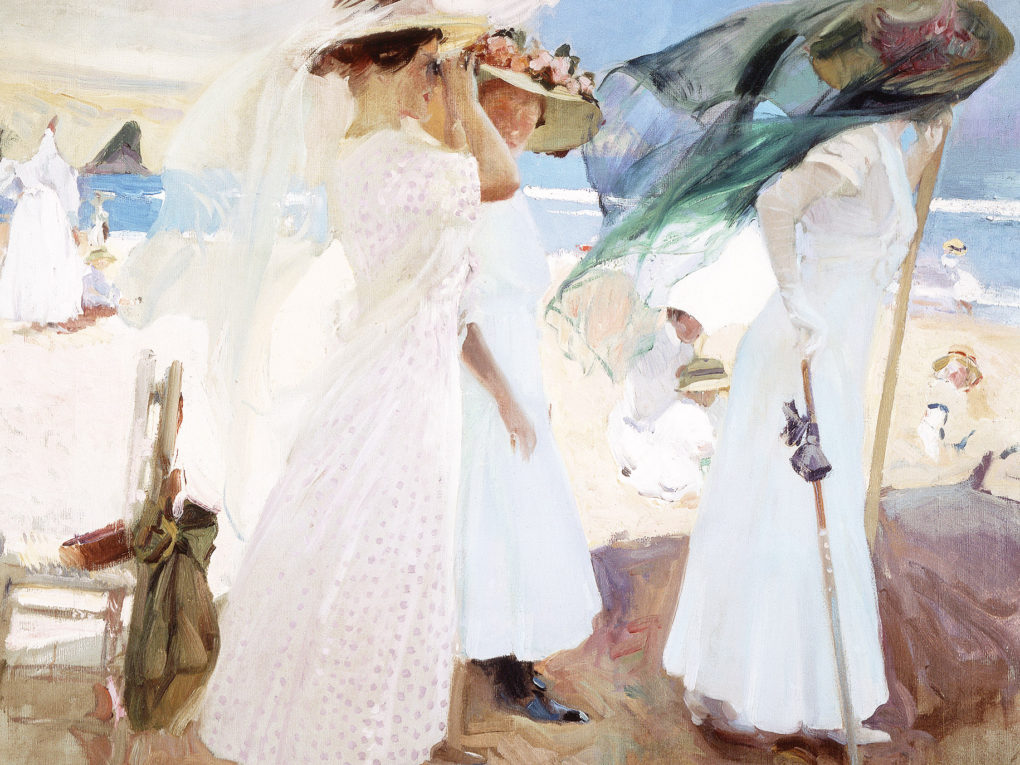
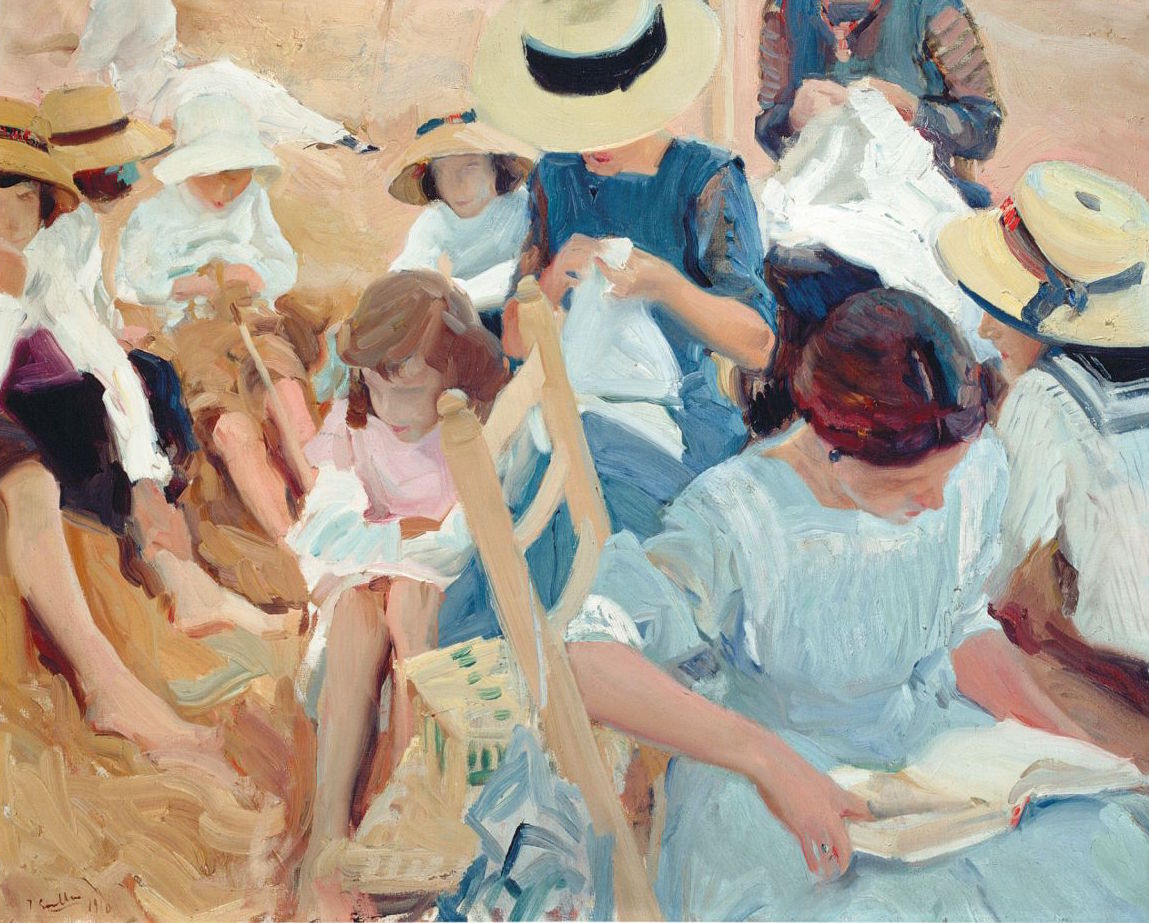
Gratacós on the catwalks of Madrid and Barcelona
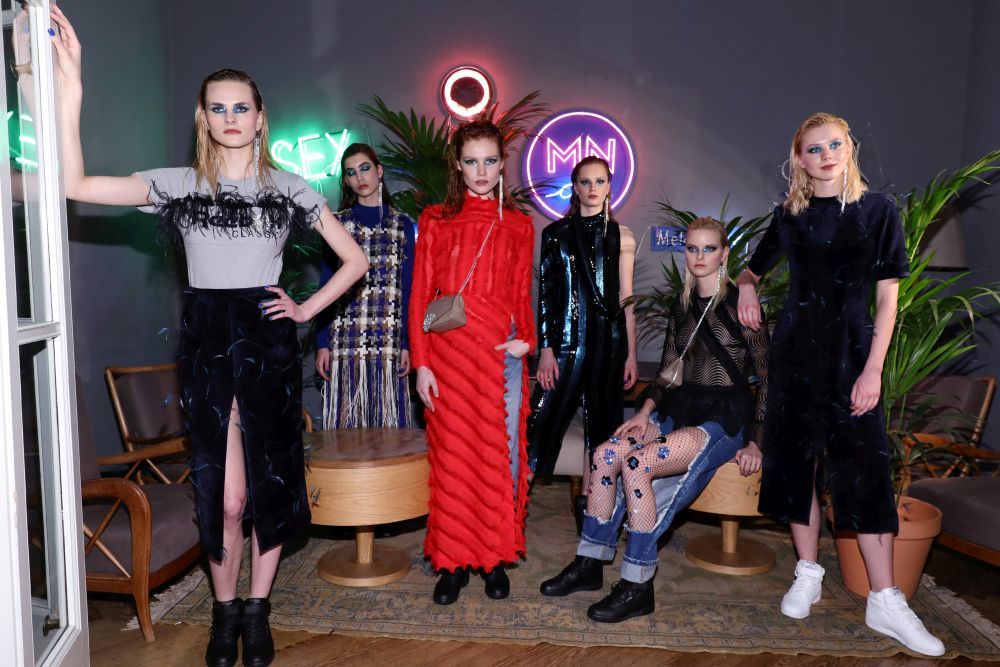
The catwalks of Madrid and Barcelona are leaving in their wake a hundred creations from the designers of the moment. From Gratacós we have seen some of our fabrics on the catwalk in the collections of Autumn-Winter 2017/2018. We highlight the most relevant looks:
Moisés Nieto’s New York party
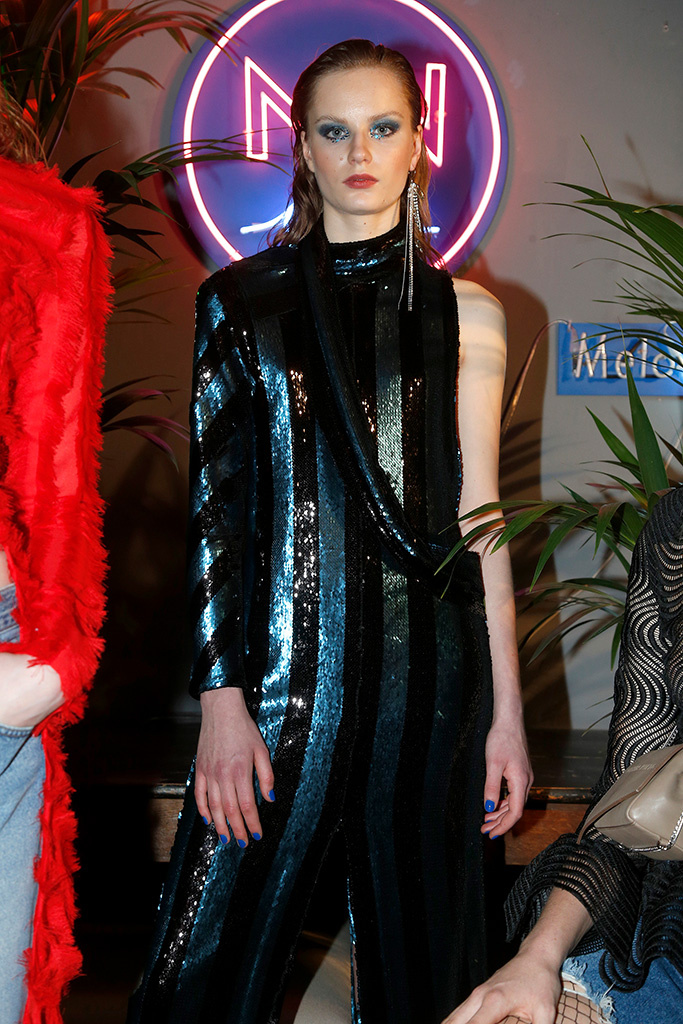 |
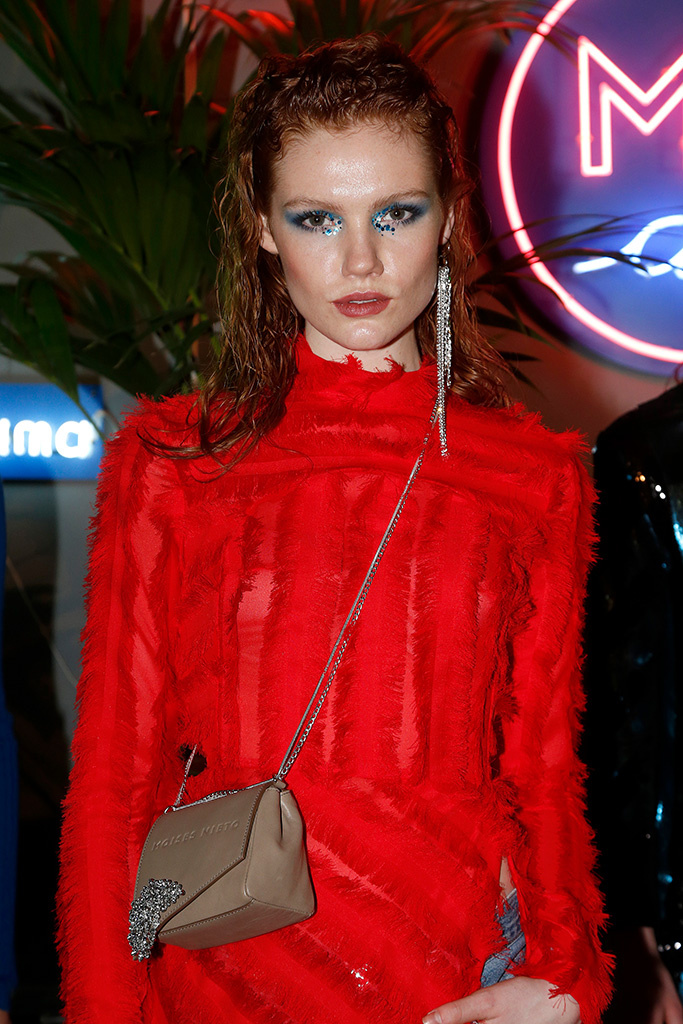 |
Moisés Nieto broke away from the oficial calender of Mercedes-Benz Fashion Week Madrid to turn to the Matador Club of Madrid into the Manhatten Area Club of the late 80’s in a nightlife full of glamour that pays homage to art. Here what the designer from Ubeda presents is inspired by the clubbing culture and the excess of endless nights with velvet and sequins in midi Dresses combined with Reeboks so as to keep on dancing. A further highlight were the black patchwork garments where devore, silk and guipure are mixed to stand out brilliantly from the crowd. A final stunning look was provided by some glamorous details such as feathers and garments with fringed silks.
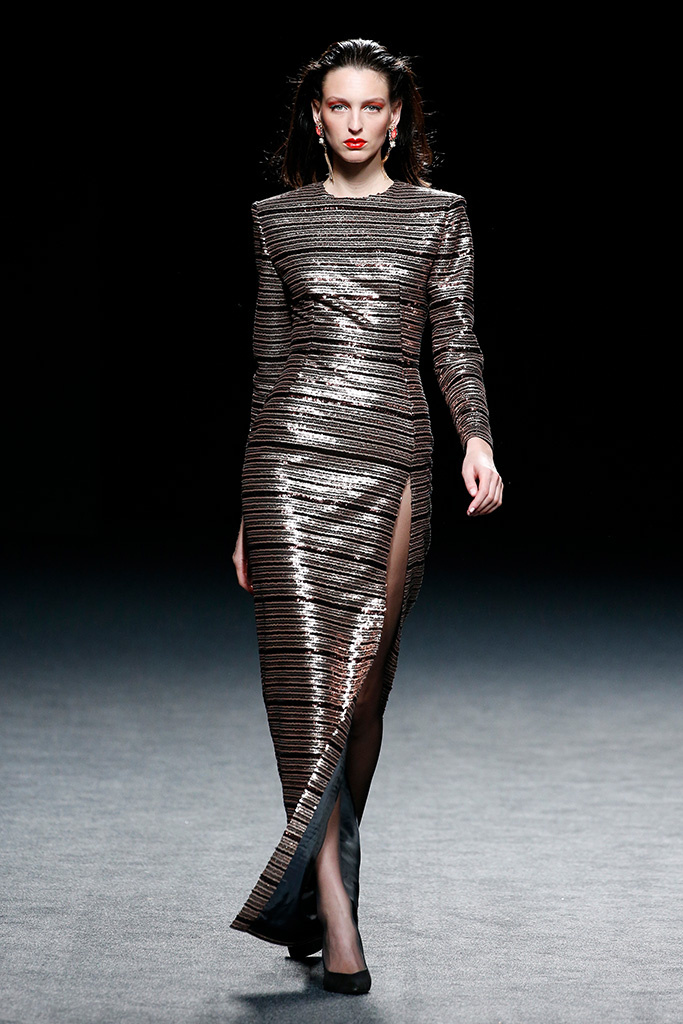 |
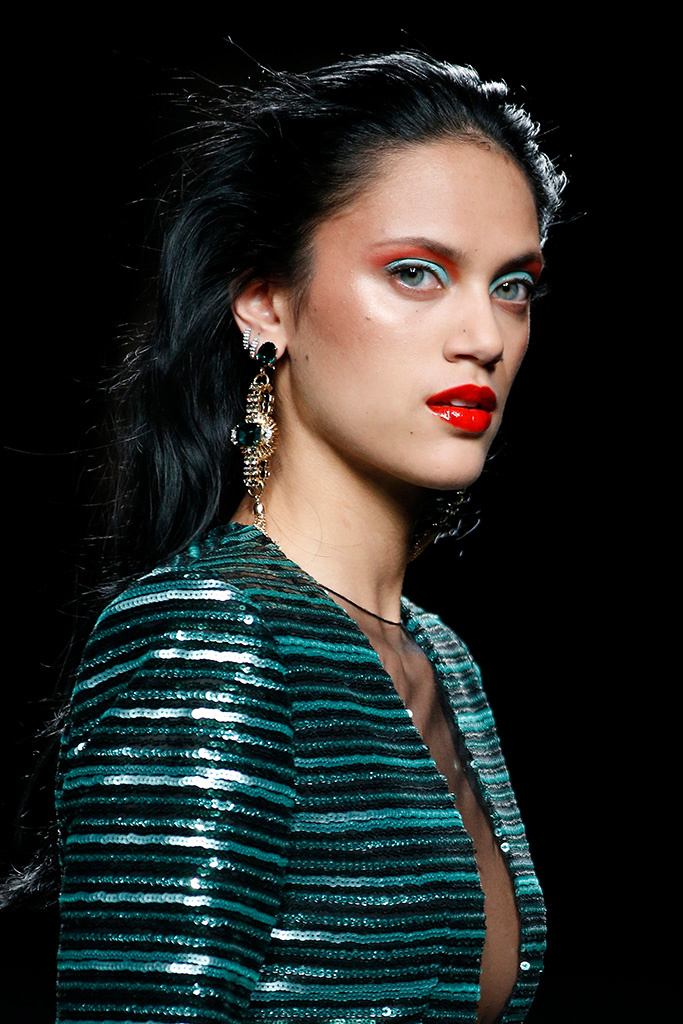 |
The eighties luxury of The 2nd Skin Co.
Juan Carlos Fernández and Antonio Burillo are inspired by the 80’s for women’s everyday wear. The 2nd Skin Co. One innovation is that knitted garments are incorporated into the most sophisticated looks via high neck jumpers with geometric print and embossed shoulders that are combined with dresses and tops with embroidered sequins and velvet, which in this case understates any excessive glare. Standing out from the old collection is also a blazer-dress of black tweed, which is sleeveless and versioned with strapless neckline. This creation coexists with mini-dresses with asymmetrical neckline and large flowers on one shoulder, mini-skirts and shirt-dresses.
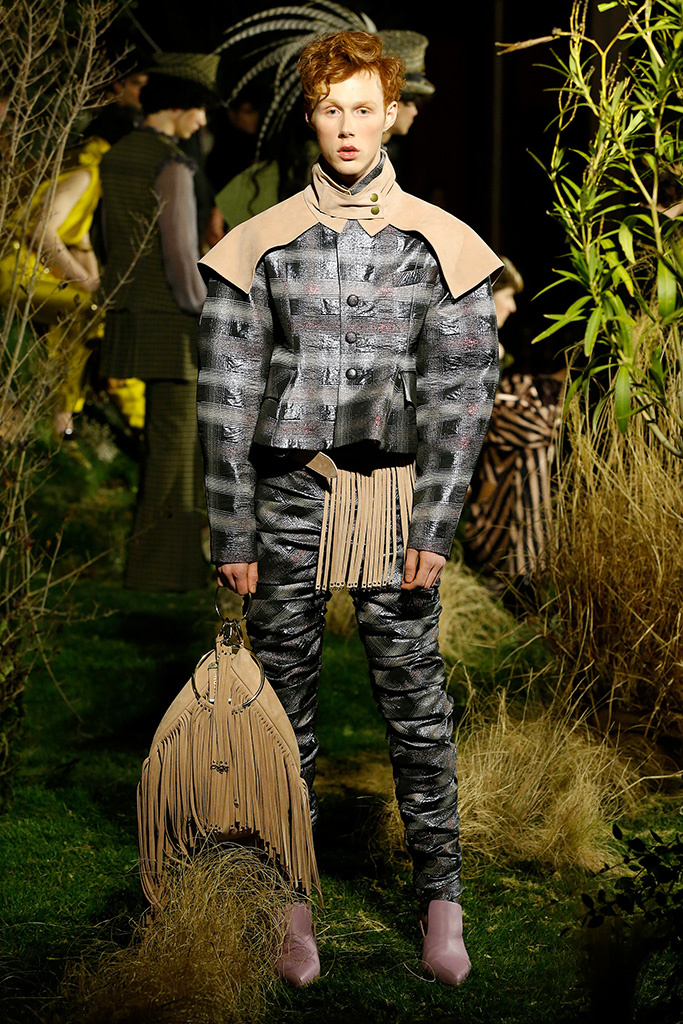 |
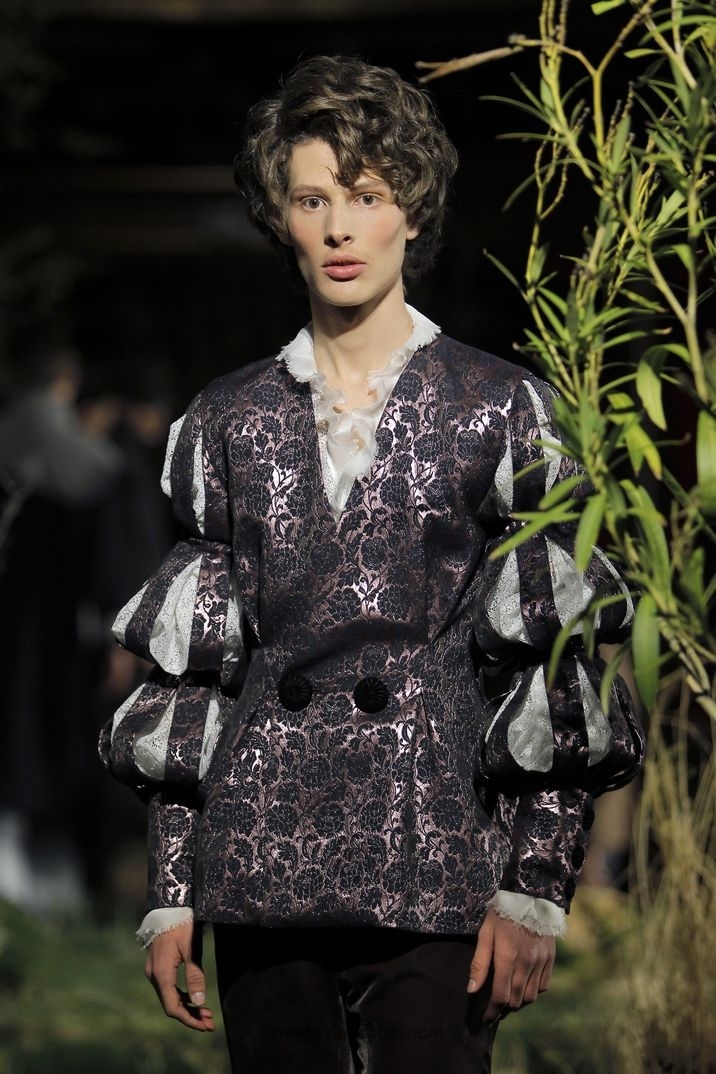 |
Hunting for Palomo Spain
Palomo Spain was tasked with closing the 67th edition of the Madrid catwalk with a collection exhibited a few weeks ago in Paris. His creation “The Hunting” was performed in the salons of the Teatro Real with male models representing the characteristic ambiguity of Alejandro Palomo’s designs. It was a Fashion show of Baroque aesthetics offering a melodramatic route through the history of the monarchy: iridescent frock coats, chain-mail tunics and medieval reminiscences, tweed jackets and richly ornamented fabrics in what was a majestically exquisite presentation.
The emotional collection by Escorpion
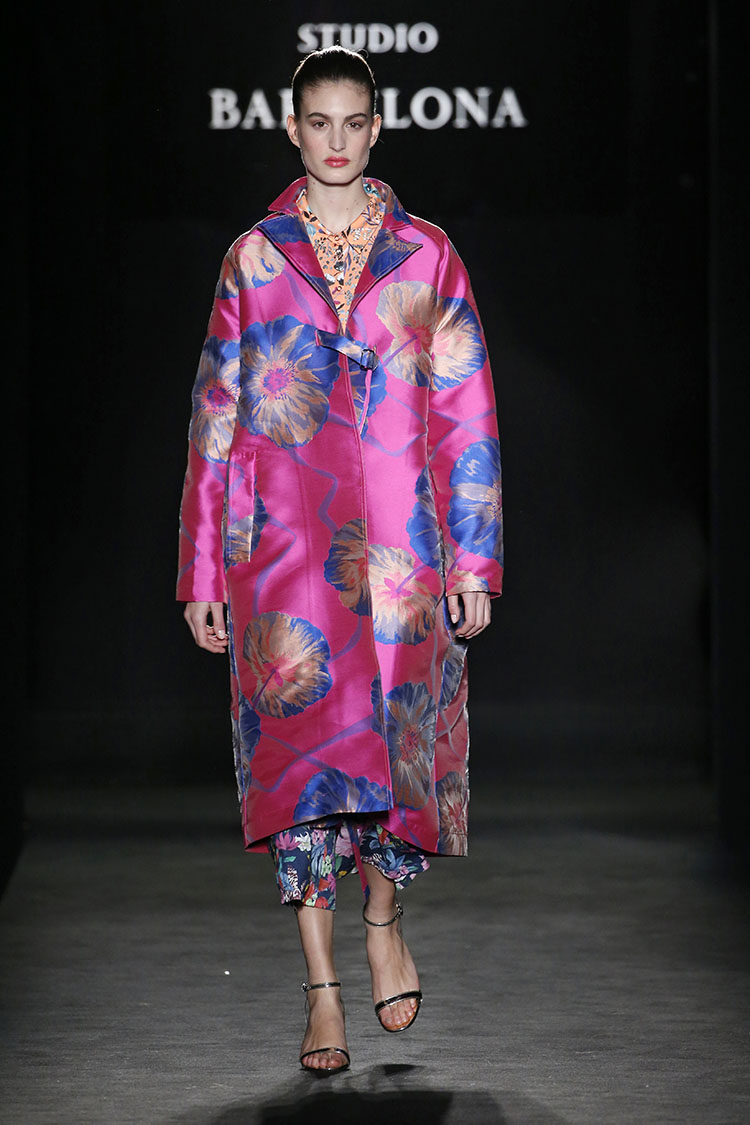 |
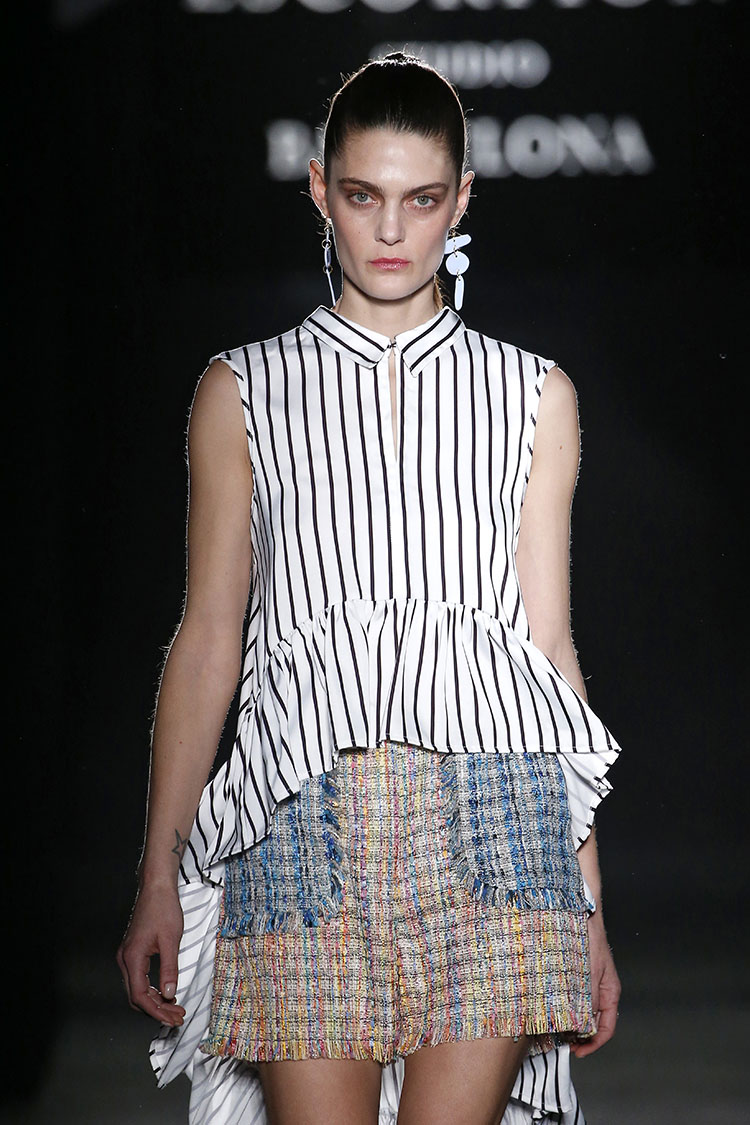 |
Escorpion presented at 080 Barcelona Fashion one of the few see now, buy now schemes (on-the-spot purchasing) in this edition. Thus the “Feel” collection corresponding to the next spring-sumnmer season by Sybille Horaist is inspired by the impulse to feel, to experiment and to touch. Their experimental presentation is divided into three lines: the first one of harder aesthetics with green camouflage, beige and black tones. The second plays geometric contrasts with zigzags, stripes and borders in various colours. Finally, in the latest looks, the flowers take over the garments with printed sweaters and flowing skirts with ruffles.
The glamorous safari of Mietis
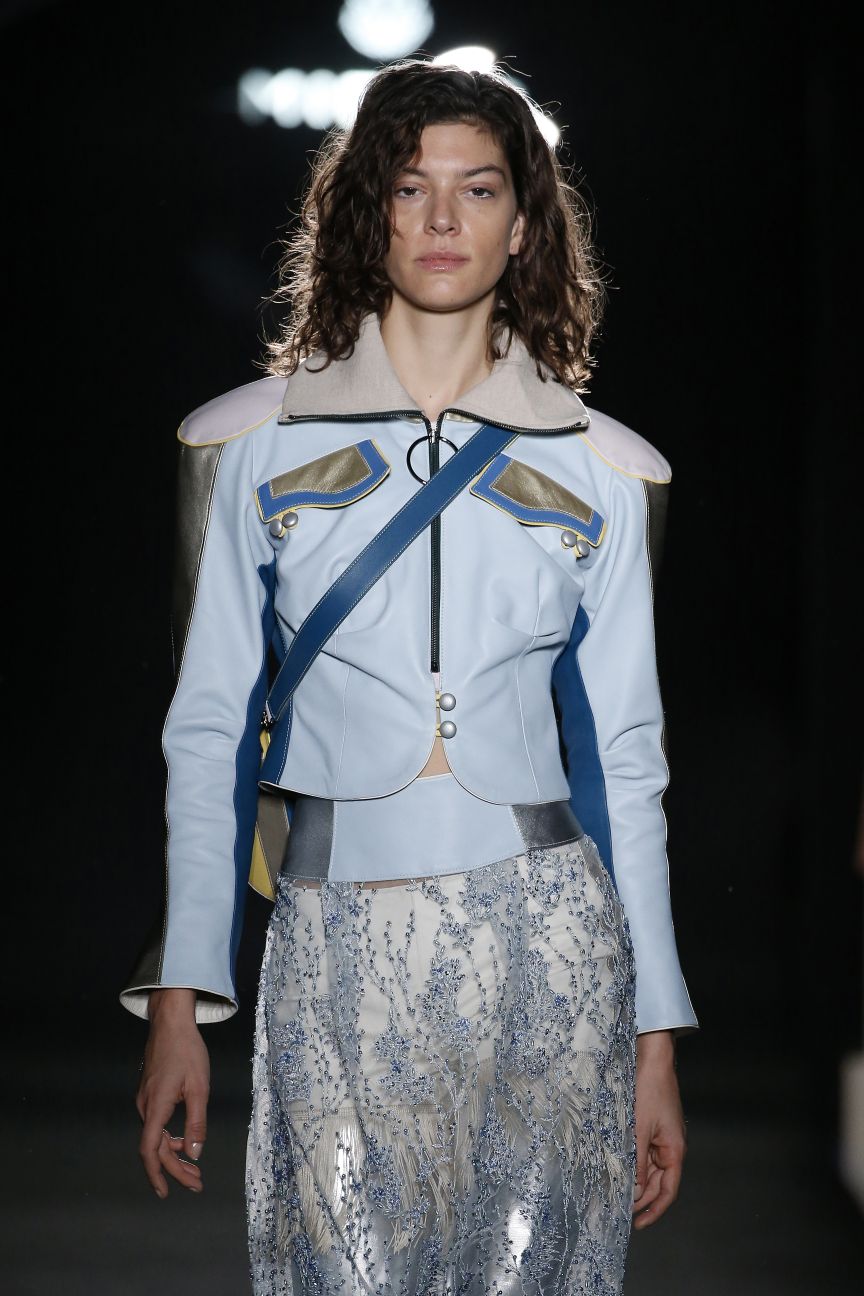 |
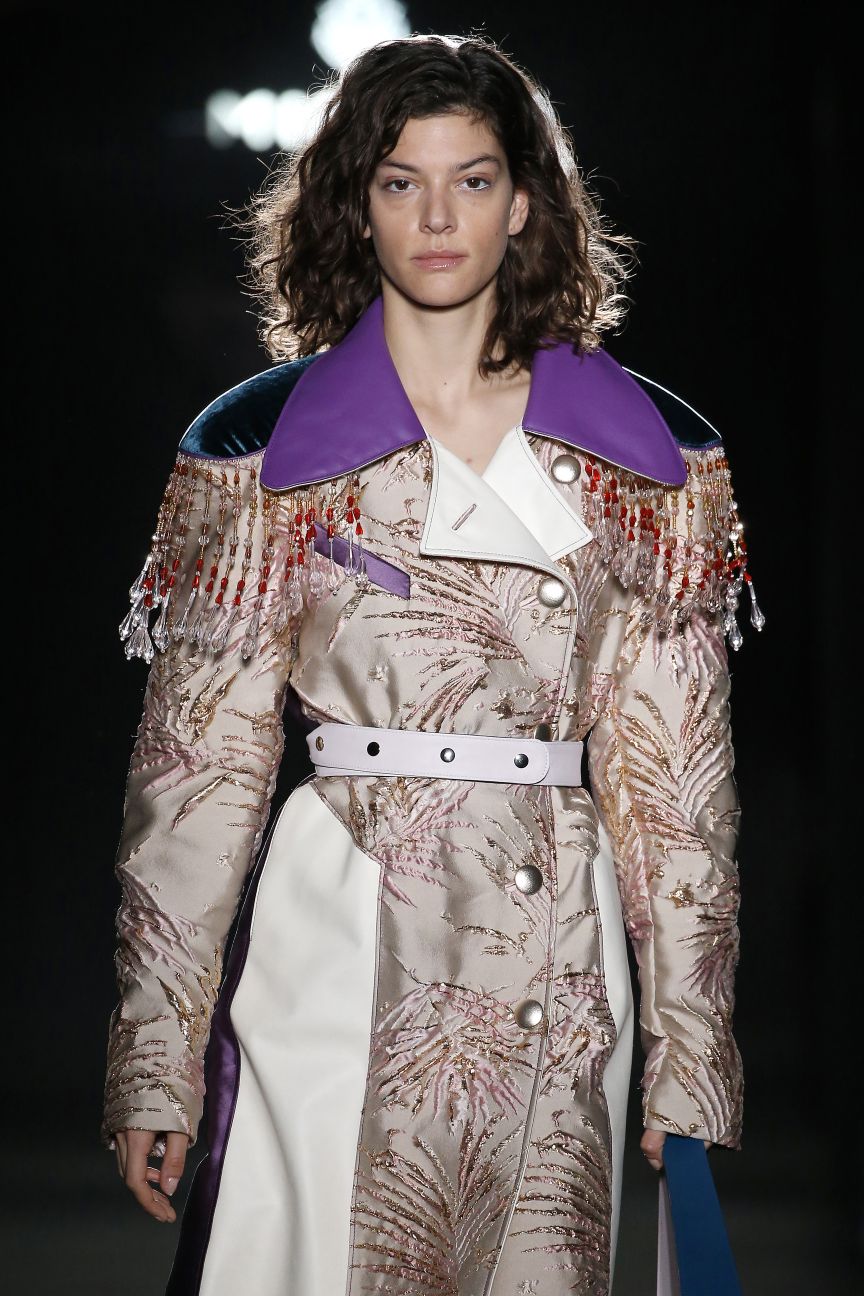 |
Maria Fontanellas offers plenty of surprises with her collection “Safari in Wonderland”, a winter presentation which we already covered in our interview with her in January (catch it again here). She takes us on a trip to an imaginary jungle full of wonders, where the woman Mietis reflects through clothing her most eccentric and independent side. The presentation of adventurous and sophisicated aesthetics at the same time combines exterior pieces like jackets and long coats of military inspiration with glitter and metallic looks that accentuate the more glam-rock spirit of the collection. Also present are volumes, rounded shapes and the application of feathers that add a point of theatricality.
